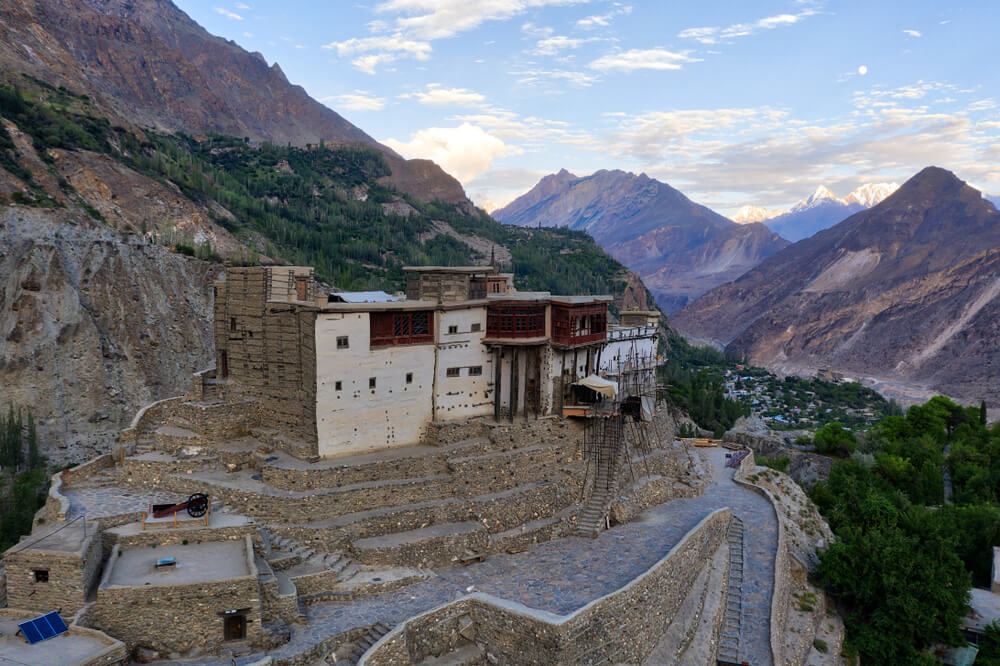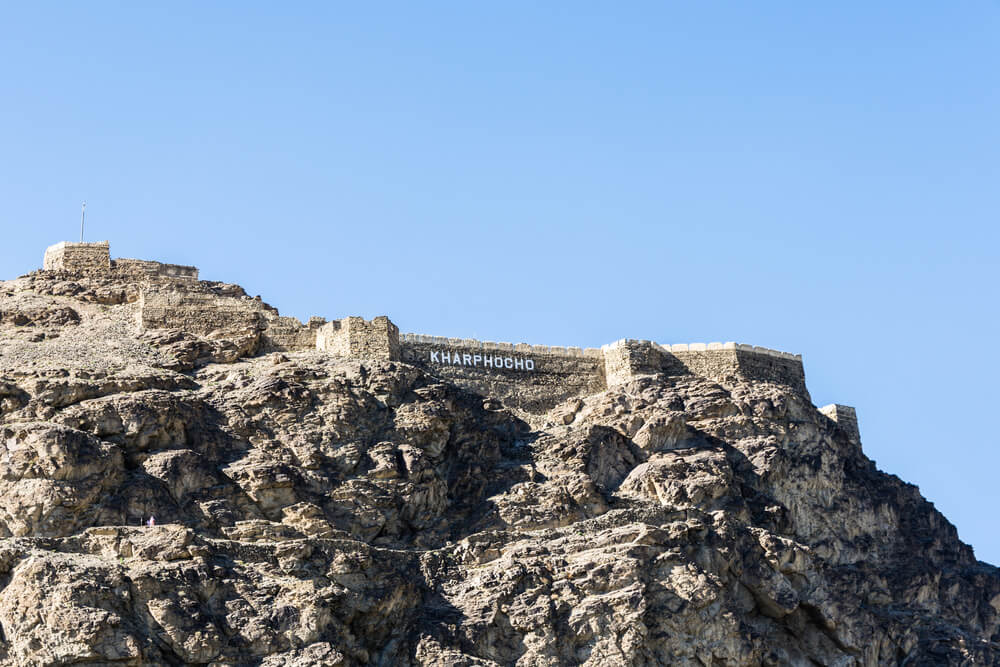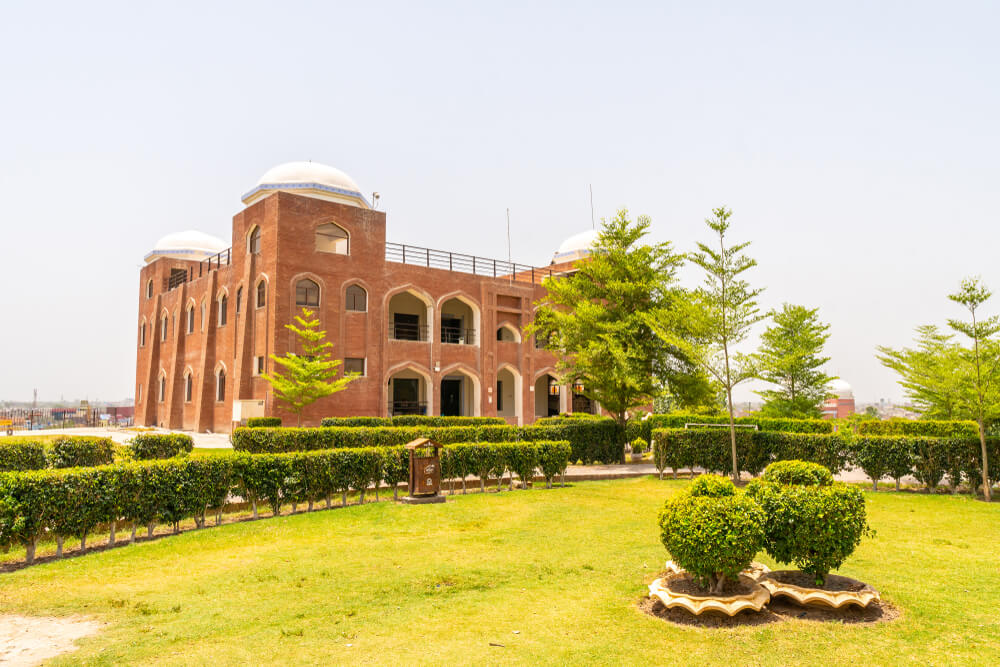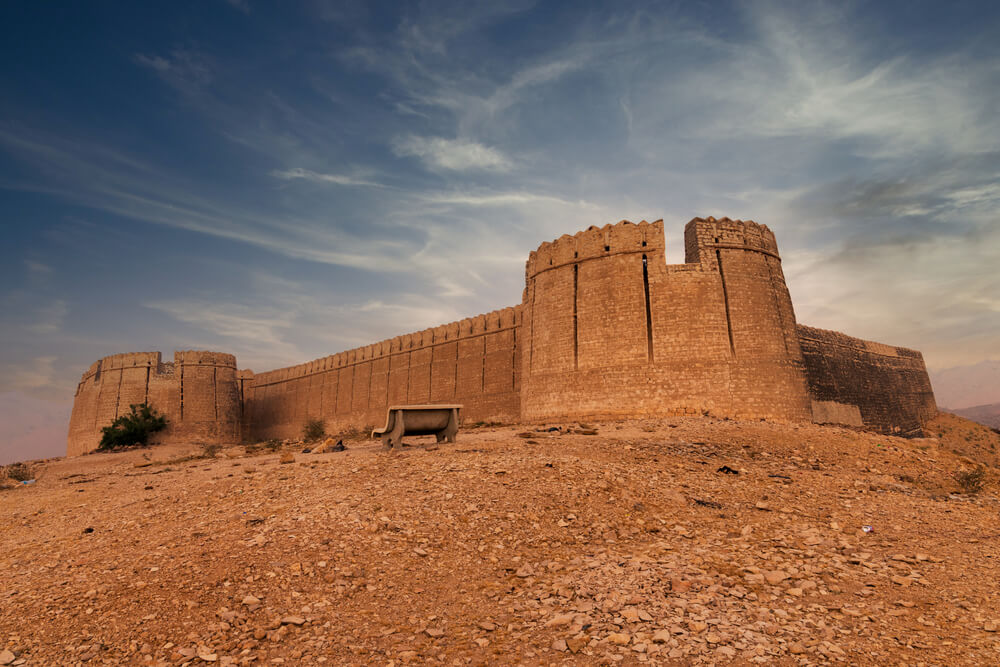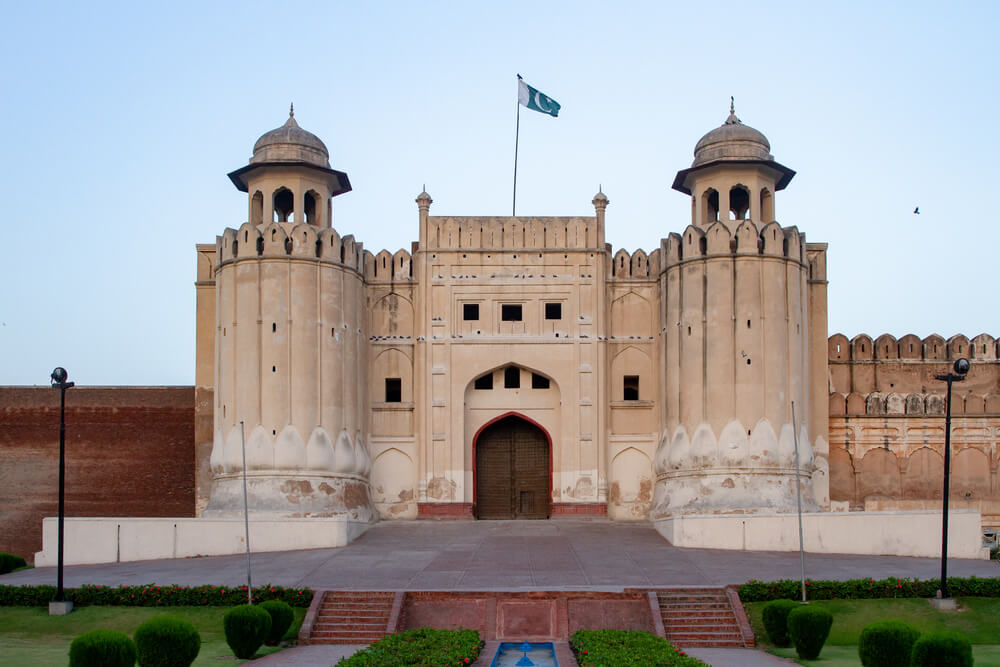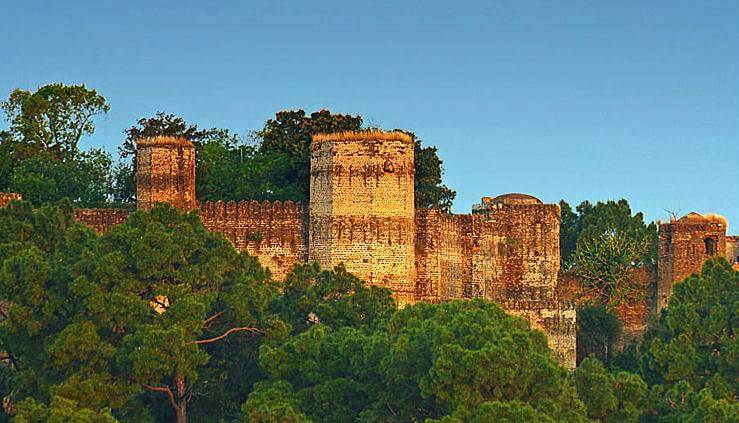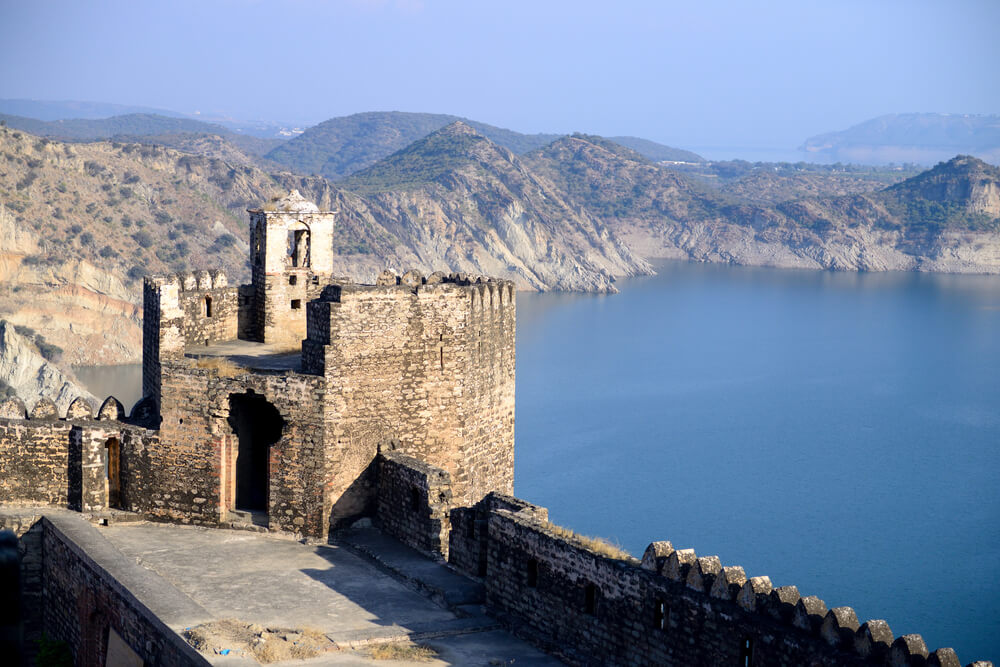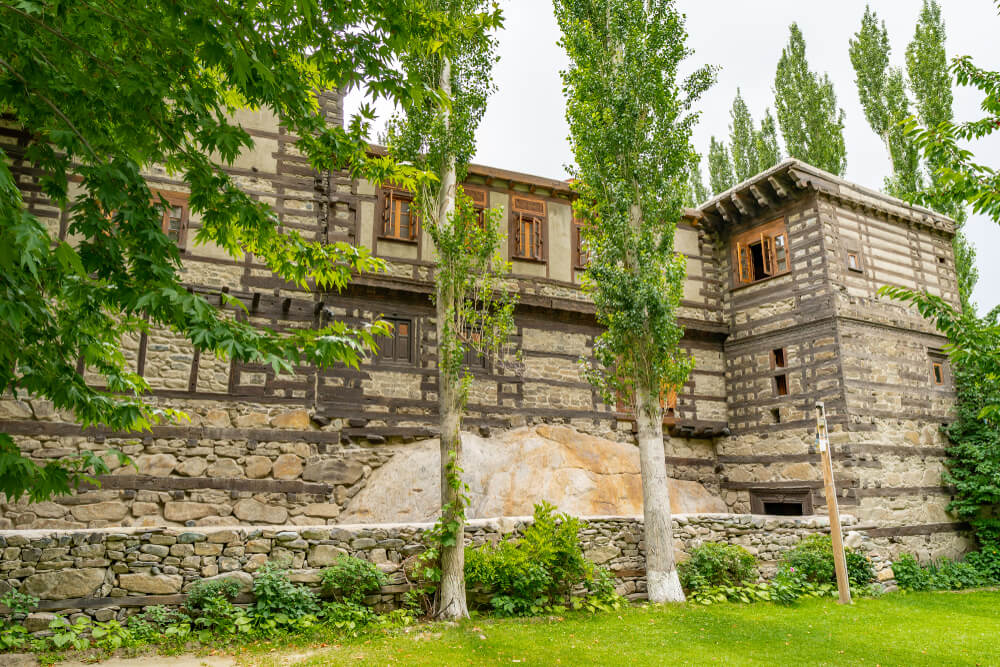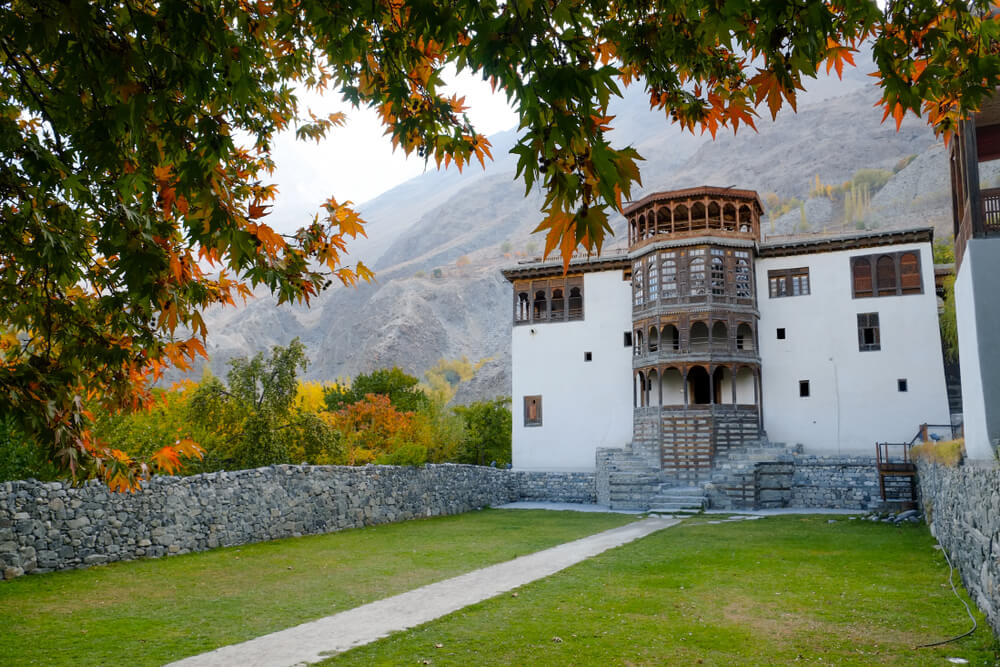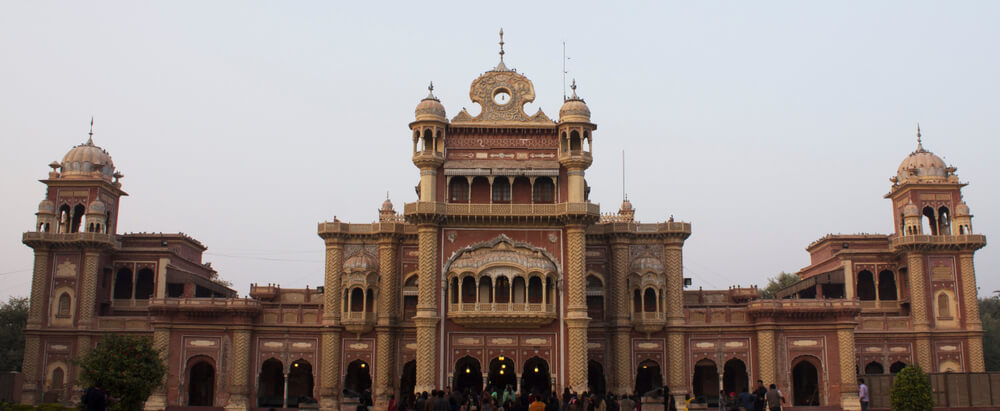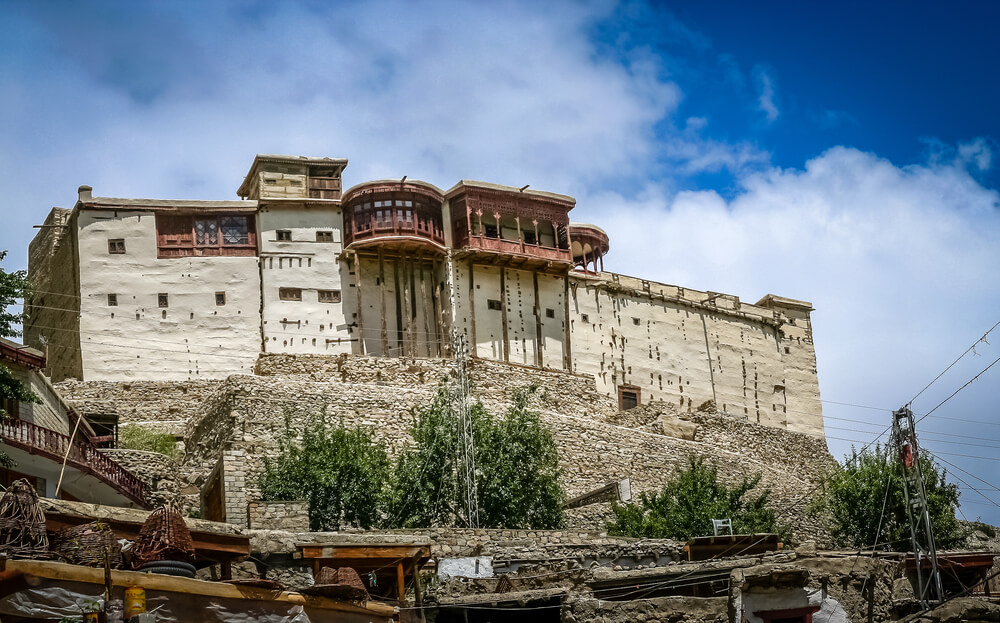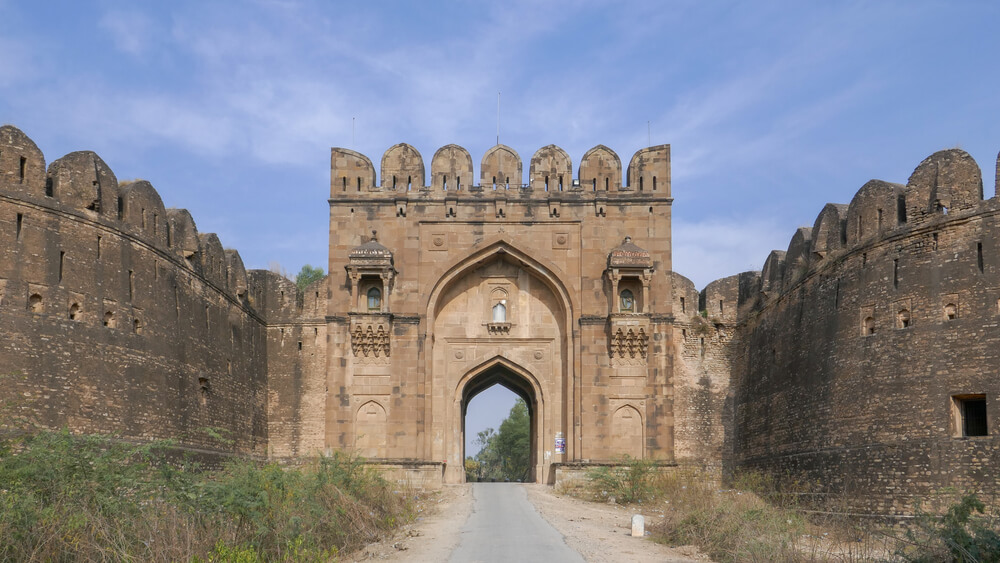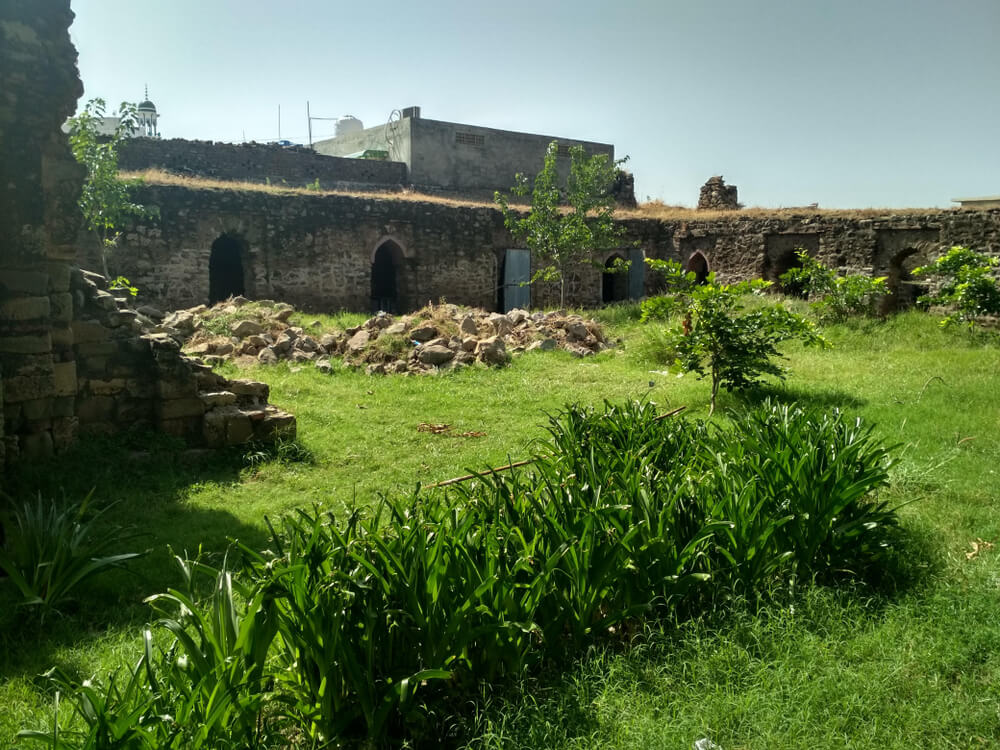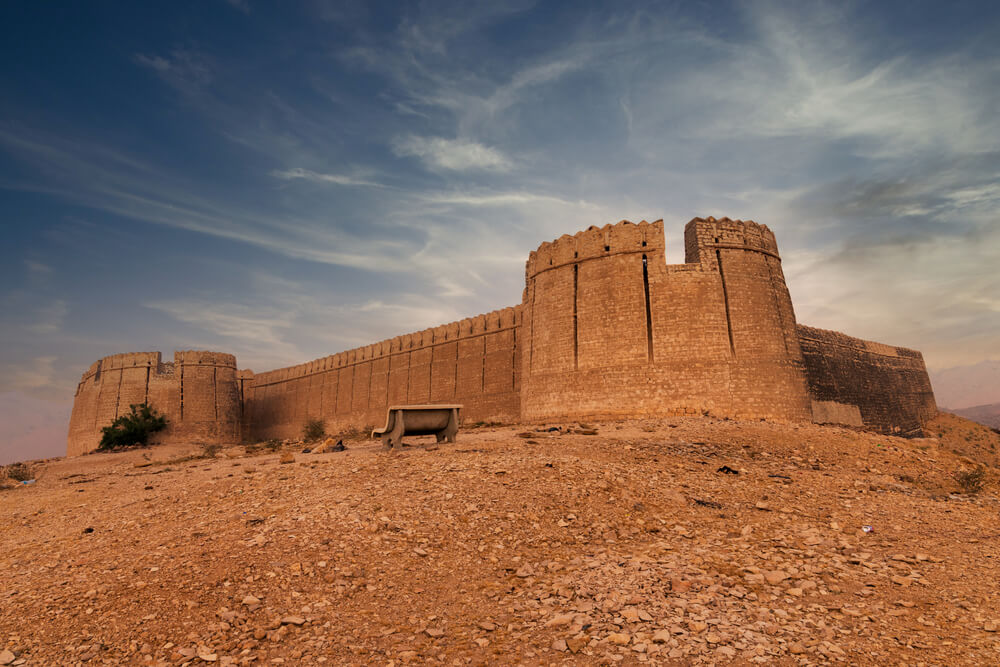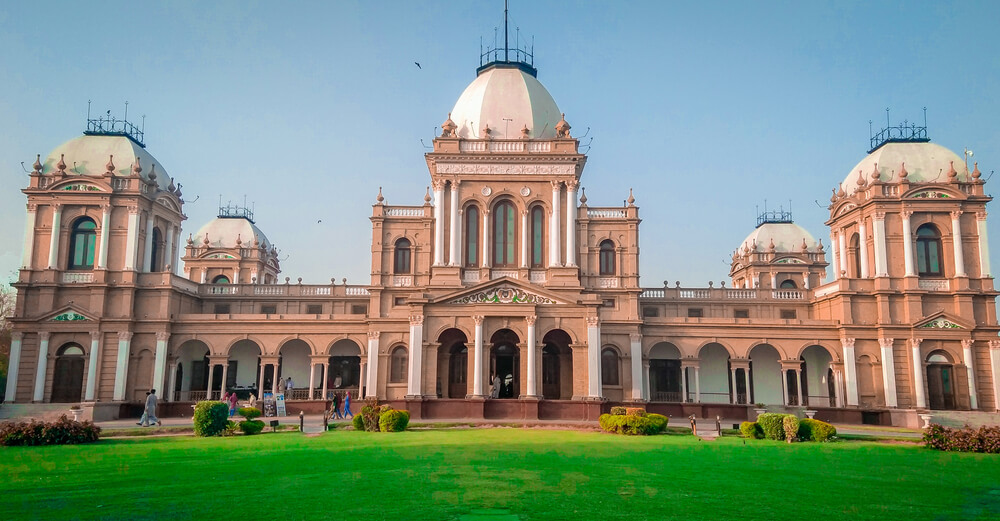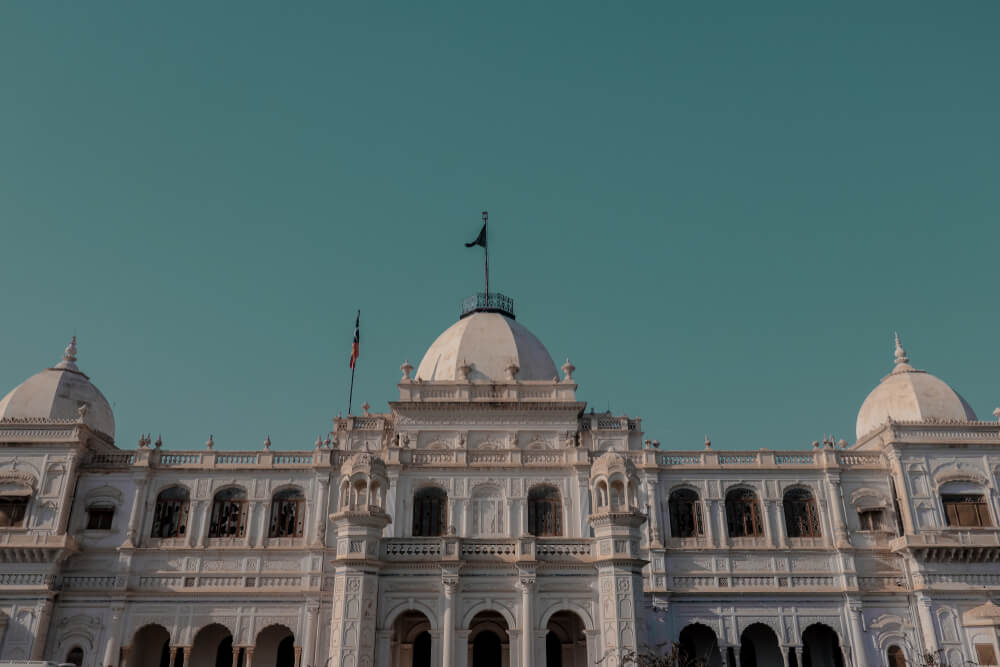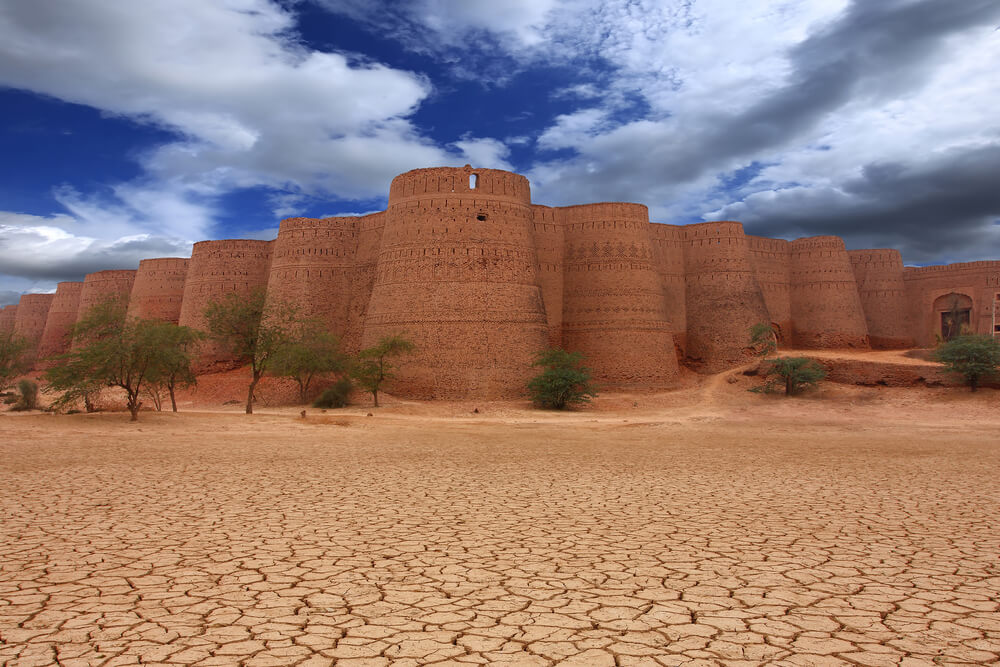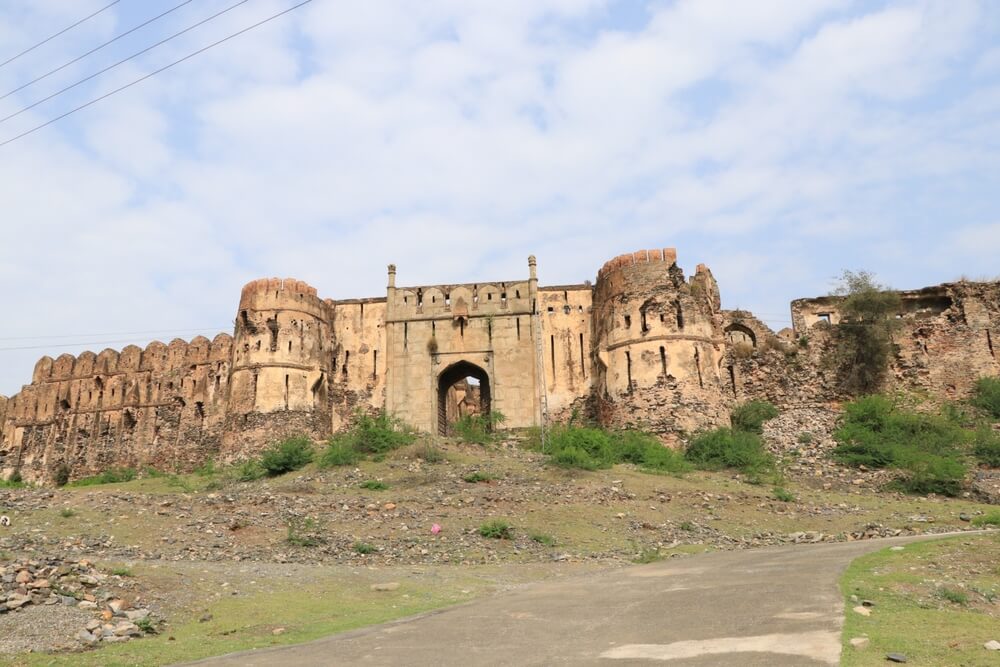Forts In Pakistan
The fort word comes from the Latin language that means “strong.” A “fort” is a “strong” building constructed to withstand an enemy attack. Kings undeniably built forts because people feared and needed protection from the attacks of other kings. A fortress is considered a strong structure, a place with a boundary, or a robust high wall around it where militaries and citizens can stay and be nonviolent to the enemy. The Fort’s walls are strong and have historically been built using various materials such as mud, dressed pebble, mud enclosed within layers of stones, mud blocks, lime plaster, etc. Sometimes, whole cities were surrounded by the perimeter of walls. It is also likely that some sovereigns wanted to show their wealth and status by building such big, tall, and muscular walls around their cities.
LIST OF 75 HISTORICAL FORTS IN PAKISTAN 2022
Pakistan is a country that is rich in history and culture. There are many historical forts scattered throughout the country. These famous forts of Pakistan are a reminder of days gone by and of the battles that have been fought to protect Pakistan’s borders. Each regiment has its own story to tell, and each one is worth exploring. There are almost seventy-five Top forts in Pakistan. Some of these forts are still in use, while others are now abandoned ruins. Whether you’re interested in history or just looking for some exciting places to visit, this List of forts in Pakistan is well worth a trip. So get ready to explore some of the most impressive structures in Pakistan virtually!
1. Lahore Fort
The Lahore Fort in Urdu Shahi Qila is in Lahore, Pakistan. It is located at the northern end of the walled city, Lahore, and covers an area of more than 20 hectares. The history of the Lahore fort begins in the 11th century during the period of Mahmud of Ghazni. At that time fort was made of mud. The Mongols destroyed it in 1241 during their attack on Lahore. In 1267 the Turkic Mamluk Sultan Balban of the Delhi Sultanate rebuilt this Fort. This reconstructed Fort was again destroyed by the forces of Timur in 1398 and rebuilt in 1421 by Mubarak Shah Sayyid. Shaikh of Kabul was occupied in 1430 Lahore Fort by troops, and it continued under the control of the Lodi dynasty by the Pashtun sultans in 1526 until Lahore was occupied by the Babur, the great Mughal Emperor.
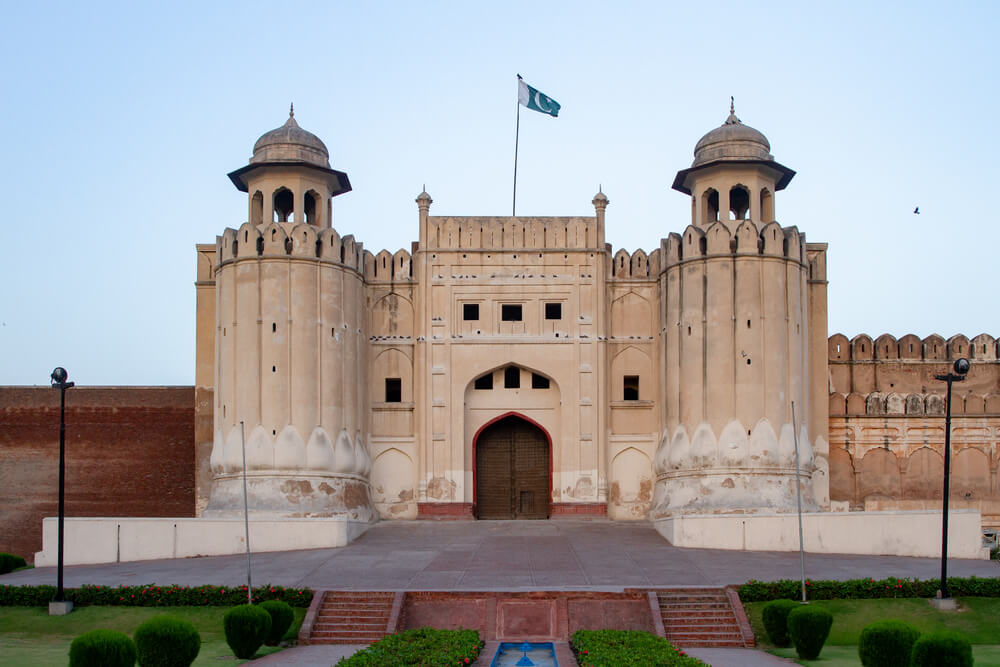
The Lahore Fort was again entirely rebuilt during the period of the Mughal Empire in the 17th century. It has twenty-one famous monuments. The construction of the basics of the latest Lahore Fort structure starts during Emperor Akbar’s reign. Akbar gave the Fort the latest and elegant syncretic architectural stylishness that featured Hindu and Islamic motifs. From 1584 to 1598, Akbar the Great held his Court in Lahore and built the Lahore Fort. He also made the city walls, which had 12 gates. The Lahore fort is characterized by luxurious marble, inlaid Persian floral designs, and a grand and iconic Alamgiri Gate. The Lahore fort faces the most renowned Badshahi Mosque.
After the Mughal Empire state’s decline, Emperor Ranjit Singh considered the Lahore Fort for residence. Since 1981, UNESCO World Heritage Site has taken control of the fabulous artistic and aesthetic zenith of Mughal emperors’ monuments. It is one of the most visited and the best forts in Pakistan.
2. Kohat Fort
Kohat fort is also known as HADYSIE FORT. It is also known as Kohat Kotal fort/ Kotal post / Kotal watch tower and by Kotal Thana. It is located on 4000 feet high mountain called Khamchuk. It is 2845 feet elevated from sea level and 1760 feet downtown. It is more than 5 miles north of Kohat city. The present assembly of the Fort was designed by Col. Tremenheere and built-in 1853 under the supervision of Lieut. A. W. Garnett, the then executive engineer of Kohat. This Fort aimed to ensure the safe passage of travelers through Kohat pass. In peacetime since pre-British rea, the primary function of the Kotal post was collecting salt duty from the traders. After independence, the Fort was the check post of the Pakistan customs service and the Anti-narcotic force.
It is now under the Pak army, and many visitors visit this place as a heritage spot.
3. Multan Fort
According to assessments, the original Multan Fort was constructed by Katoch Dynasty Rajput between 800 and 1000 BC. Later it was destroyed and rebuilt by Ranghar chiefs on a hillock near the city of Multan. It is separated from the city by the Ravi River. During British colonial rule, the Fort was destroyed by British forces. British forces ruined this historic Fort. The walls of the Fort at 40 to 70 feet (21 m) elevated and 6,800 feet (2 km) in the perimeter. The 46 bastions of the Fort included two adjoining towers at each of the four gates (Bab e Qasim, Hareri, Sikki, and Khizri Gates) that protected the Fort from invaders. Within the Fort, a citadel flanked by thirty towers, a Hindu temple enclosing a mosque, and a Khan’s Palace. The battering ruthlessly damaged the fortress. Fort has a Dam Dama Art gallery, the highest spot to get a panoramic view of the city, close to the Ghanta Ghar gorge. The structure is of little interest, but its terrace offers a stunning view over the city, the Fort, and the Rukn-i Alam Mausoleum. It also occasionally hosts exhibitions of exciting paintings.
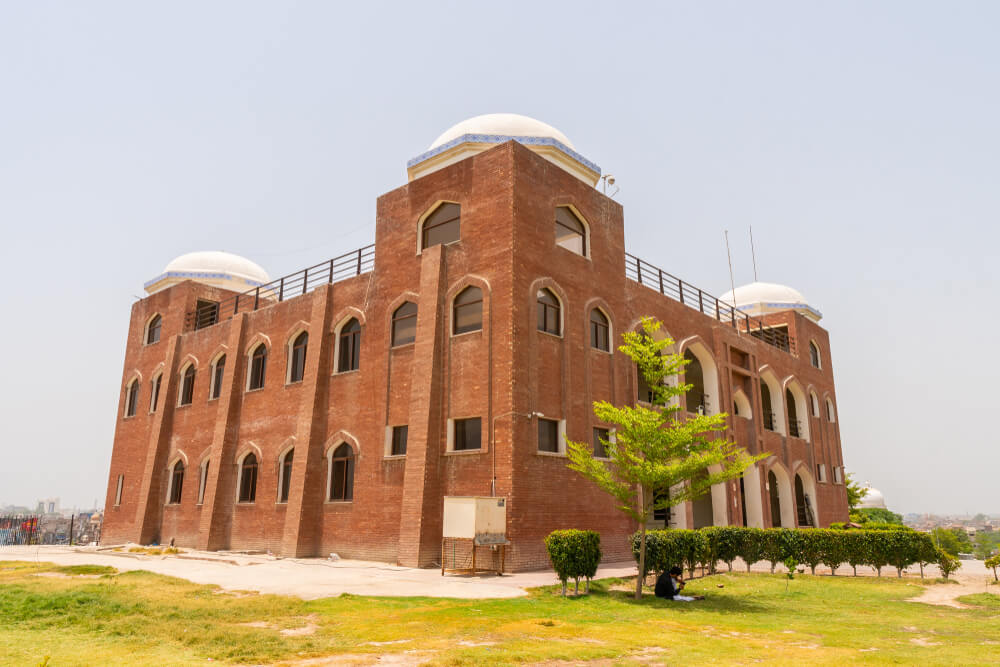
We still have much to learn from our past, as evidenced by the Qila Kohna excavation. They still have much to teach us about who we are and where we came from, even though the Fort contains the secrets of these ancient civilizations. Check out the discoveries from this dig if you are interested in history or archaeology—there are undoubtedly more treasures to be found!
4. Karjai Fort
This vast Fort is near Khuiratta, Karjai village. The walls of the Fort have fallen. Property is looted, and wild grows here, but there is no government plan of government of AJK for protection or restoration. This Fort’s magnificence and sight view give the visitors an extraordinary and maleficent effect on the heart and soul. There is a need to restore this tourist site for the attraction public, foreign and tourists as a historical heritage.
5. Red Fort
A fortification from the 17th century called Red Fort, often called Muzaffarabad Fort, is situated in Muzaffarabad, Azad Jammu, and Kashmir, Pakistan. The Kashmiri Chak dynasty constructed it. Locally, the Fort is referred to as “Rutta Qila” or simply “Qila.” The Mughals threatened the city, which Kashmir’s Chak rulers foresaw. A key area saw the start of construction in 1559. In 1587, Kashmir was captured by the Mughal Empire, and the Fort’s significance diminished. Sultan Muzaffar Khan of the Bomba Dynasty, who founded Muzaffarabad, saw the Fort’s erection finally end in 1646. In 2005, the Kashmir earthquake damaged Most of the Fort’s artifacts, and the majority were looted.
6. Sandeman Fort / Zhob Fort
The historical Sandeman Fortor Zhob fort is in Zhob district, Balochistan, Pakistan. The Fort is located between Takht-e-Suleman and the Zhob River. It is one of Baluchistan’s most famous and attractive buildings for the residence of political agents during the British Raj. In 1890, it was constructed by the orders of Robert Sandeman (agent to the governor-general of Balochistan). It is famous for its particular ship-shaped structure. If you see it, it looks like a giant vessel from a distance. The government is now making efforts to restore the monument. The Fort is too old, but the colonial objects, including Sandeman’s furniture and piano, are still safely well-maintained in the Fort. Currently, this Fort is being used by the deputy commissioner of Zhob as the office and the residence. The government also planned to restore two other buildings around this Fort.
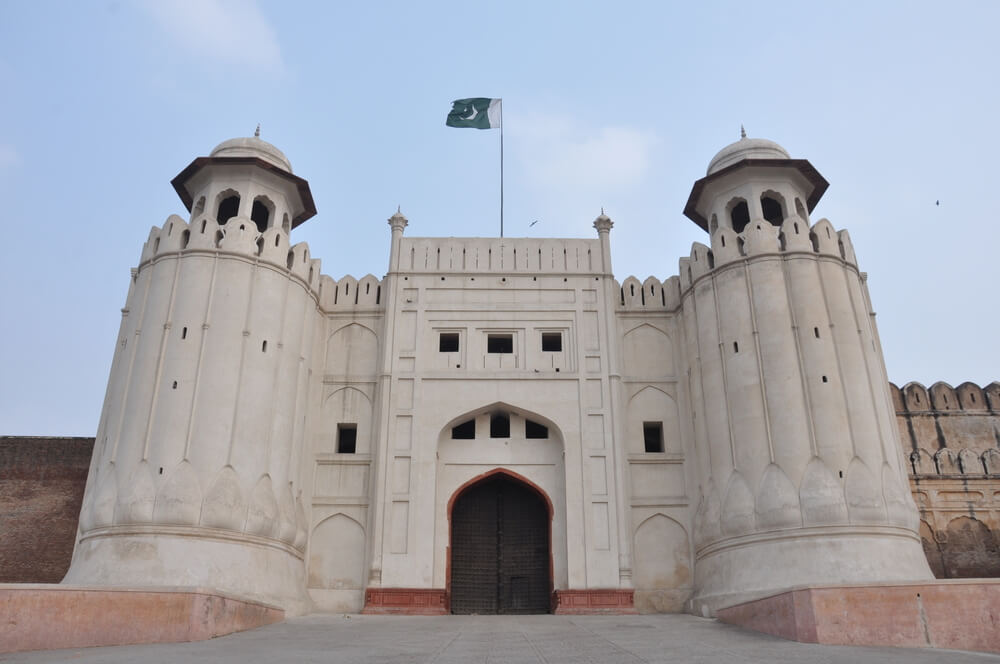
7. Kalat Fort / Meeri Fort
Kalat’s Meeri Fort is one of the ancient forts discovered in Turbat.
This Fort is more than 5,000 years old. According to history, it is demonstrated that it was a king’s Palace, and they discovered gold, diamonds, and other precious things in the interior of the port. The ancient, famous Balochi love story’s hero Punnhun is said to be the landlord of this old port. Presently, this Fort is overlooked by the people and the local government. It is a need of the hour to look at and repair this precious heritage as our assets.
8. Punno Fort / Sassi Punnu Fort
Balochistan province is a historical place of tangible heritage. This historical land was reigned by countless numbers of kings and monarchs. One of the renowned forts is the Punnu Fort, made of mud and stones, Standing high 15 km away from Turbat city from 6000-8000BC. This historical Fort fascinates many tourists across Baluchistan every day. This Punnu Fort is also renowned as Meri-e-Kalakech or Meri-Kalat, as it is recognizable for the love story of “Sassi Punnu.” Punnu was a home-grown prince whose love was with Sassi. Their story remains a tragic love story that is popular to date in Pakistan. One of the outstanding facts about the Fort is that the archaeologists also cited some graves and skeletons. It is also a famous picnic point in the city, surrounded by green date palms and meadows.
Regrettably, this Fort is destroyed, and the walls of the Fort are getting down. It is a concern of the local government and the authorities to take steps and preserve the historical Fort.
9. Fort Munro
Fort Munro is a lavish green hill station located on the range of Koh-Suleman in Dera Ghazi Khan. It is well known because of its impressive beauty and location. Fort Munro is also named by Tuman Leghari, Anari Mool, and Loilaresir in the Balochi language. In the late 19th century, the Fort was formerly developed as a summer hill place by the British. Its height is about 1970 m. The beautiful pine, mango trees, and scenic beauty of Fort Munro are gorgeous assets of Pakistan. The fort Munro bridge is the second-biggest bridge in the wide. It carpeted over 33 km over the mountainous area to conveniently access the Fort. Its weather is mostly cold, with frequent rainfalls and snow. These features add more importance to the Fort as a popular hill station, especially during summers.
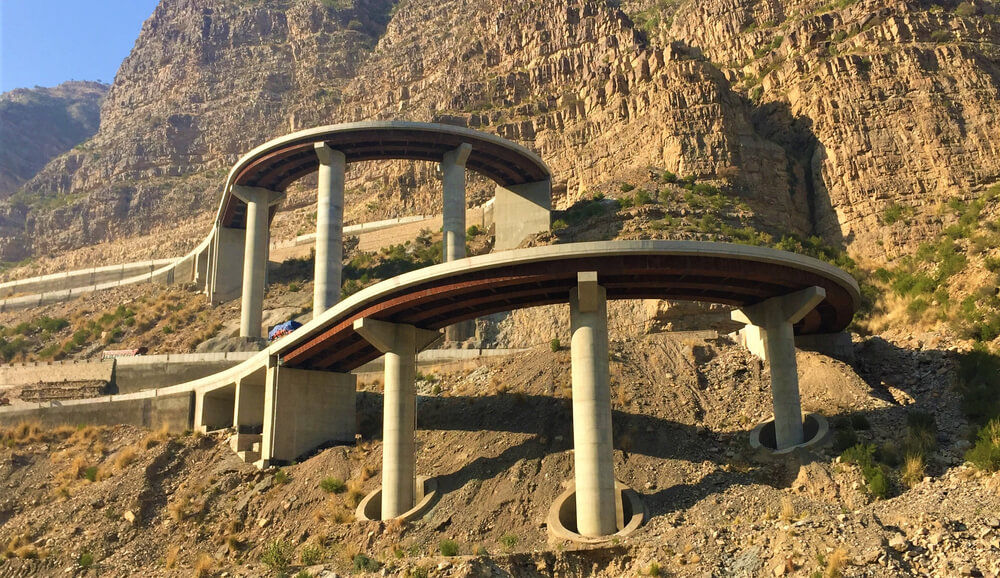
10. Sibi Fort
Sibi Fort is situated in Sibi, the city of Baluchistan, Pakistan. In the 11th century, Sibi was encompassed by Ghaznavid Empire. According to the Book “Ain-e-Akbari,” the Sibi Fort was in control of Jam Nizamuddin of Sindh as a Domain in 1488 AD. In the 15th century, Sibi Fort was governed by Sultan Pur-Dil Barlas. In 1543 AD, Mughal king Humayun and his son Akbar visited this Fort. They settled and built up the rooms inside the Sibi Fort ruins. Panni (Pashtun tribe) were already in control of Sibi Fort. According to the Sibi District Government’s official records, the Pashtun tribe Dehpal once resided in the Sibi Fort. They still hold the land next to the Fort, and the tribe’s Dehpal Kalan and Dehpal Khurd villages are situated next to it. The Sibi fort is famous because King Chachnama defeated the Sewas and punished them by capturing them in the Sibi fort.
It is an excellent place to visit for tourists and nationals. It is a historical place of the Rind Baloch Sardar mir Chakkar tribe. It came under the control of the British in 1880.
11. Baltit Fort
Baltit Fort is located in Karimabad, the capital of Hunza state, now the Tehsil headquarters of District Gilgit (the capital of Northern Areas of Pakistan). The Karakoram Highway leads to Baltit Fort from Gilgit. The uniqueness of Baltit Fort is that it stands on an artificially flattened spur on the Ulter Glacier that gives it a strategically commanding view of the valley Hunza. The Fort is made of wood and stone with mud. The Baltit Fort is standing on a high rock, has three floors, and the shape fort is rectangular. There are mainly storage chambers on the ground floor. On the first floor, it is an open hall. A stairway leads to the 2nd floor. The second floor is specially made for the winter seasons. Here you can see a significant audience hall, dining hall, guest room and kitchen, and servants’ quarters. The 3rd floor is specially designed for the summer season. It consists of an open dining room, reception hall, and bedrooms. Sadly, this iconic sight fort is about 700 years old. It’s now under UNESCO World heritage since 2004. It is open to tourists and visitors daily, and visiting hours are nine am to 5 pm.
12. Kharphocho Fort / Skardu Fort
Kharpocho fort is one of the ancient forts of Skardu city, Gilgit Baltistan. In the 16th century, King Ali Sher Khan Anchan constructed this Fort employing heavy stones, exquisite woodworking, and creative skill. Its elegance is that from the top of Kharphocho fort, one can see the whole town of Skardu. The Kharpocho Fort is a well-known fort in Skardu, also known as the Skardu fort. In the local language, Kharpocho means “the King of Forts.” Skardu fort is on the top of a mountain almost 40m from the central city of Skardu. Near the Fort, the Shigar and Indus rivers converge. This Fort was built by King Ali Sher Khan Anchan in the 16th century using massive stones, fine woodworking, and artistic talent. The antique structure contains many rooms and ample interior space. During the independence of Gilgit-Baltistan, a fire burned many of its rooms. During the wars, it was used by military forces to keep an eye on the entrance and exit of the city Skardu. It is a tourist spot open from 11 am to 5 pm, seven days a week.
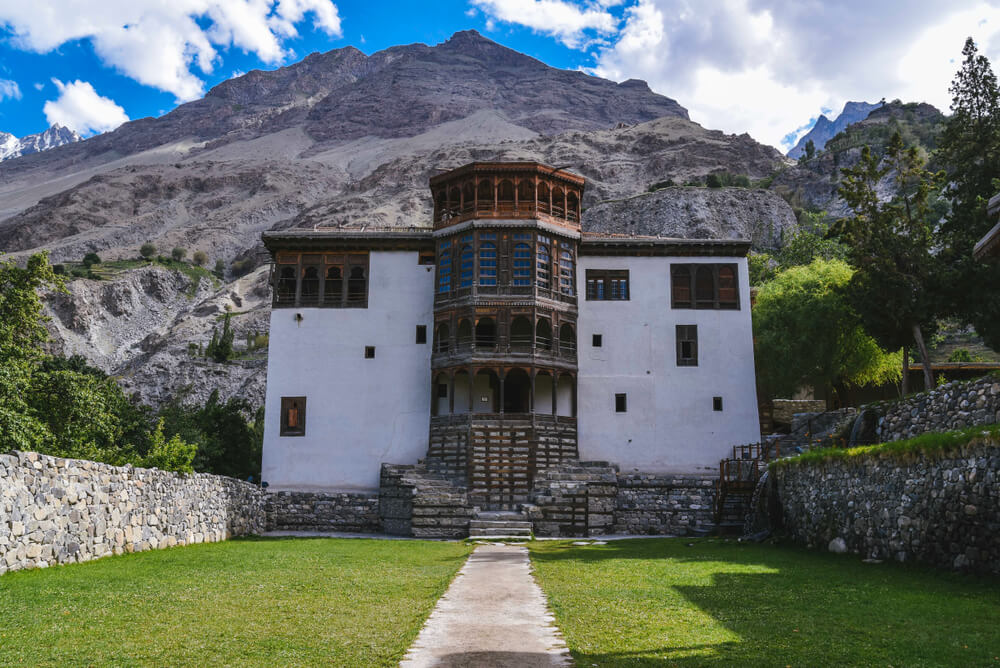
13. Altit Fort
Altit Fort is around 1100 years old and is the oldest monument in Gilgit Baltistan, Pakistan. Altit Fort was constructed by the ruling family of Hunza, the Mirs, in the 11th century in front of Karakoram. They built it to display their power to the twin state, the Mirs of Nagar. According to its history, after four hundred years of its birth, it became controversial among two brothers of the royal family of Hunza. One brother, Prince Ali Khan, separated and made his other own Fort,’ Baltit Fort. That Baltitt Fort later became the capital of Hunza Valley. The Fort had crafted wooden doors, windows, and stairs. These are such as in ancient times. Beautiful and crafted utensils and vessels are displayed inside the Fort, which has witnessed century-old stories. Altit Fort is the first Fort of the Hunza Kingdom. Agha khan culture services Pakistan has a unique hand in restoring this Fort. It’s joyful and full of historical places to visit and, in addition, one can enjoy not only the culture but also the traditional food of its valley.
14. Serena Shigar Fort
The Serena Shigar is an old Fort on the rock. It is in the town of Shigar, Baltistan, Pakistan. In the 17th century, the Shigar fort was built by the Raja Amacha of the Shigar Dynasty. The Ancient Shigar fort is also known as Fong-Khar, which means “the Palace on Rock.” This 45-year-old Fort is the beauty of our Northern Areas of Pakistan. Shigar Fort is conserved as a unique architectural heritage. Visitors and tourists have an excellent opportunity to experience the legacy of the 17th-century raja and amuse themselves with the original ancient architecture. Aga Khan culture Service of Pakistan restore this 400-year-old Fort with a careful restoration strategy. In 2005, the guesthouse of Shigar fort opened to the public. Facilities for a guest kitchen, laundry, restaurant, and gift shops are also provided to entertain tourists.
15. Khaplu Fort
Khaplu Fort is also known as Yabgo Khar, which means “The fort on the roof.” It is an ancient fort and Palace built in the 19th century. Khaplu fort is located in Khaplu, Gilgit-Baltistan, Pakistan. This Fort is considered one of the masterpieces of architectural heritage and attracts tourists. In 1840, the Khaplu fort was built by the Yabgo Raja Daulat Ali Khan. Khaplu fort was constructed by the balti, Kashmiri, and local artisans. It influences neighbors like Kashmir, Ladak, Tibet, and Central Asia. History tells us the story of choosing the place for a fort by rolling a large stone down from a cliff where it stops. For more than 100 years, it remained the residence of a ruler and then his descendant. Even the last Raja of Khaplu, who died in 1983, lived here. In 2005, the work of restoration was started by the Aga Khan heritage service of Pakistan with the help of Norwegian ministry funding. After six years of working on restoration, in 2011, Serena Hotel Group opened it to the public. It is a unique monument with 21 heritage rooms and a hotel: the Karakoram and Himalayan views from the Peak of Fort.
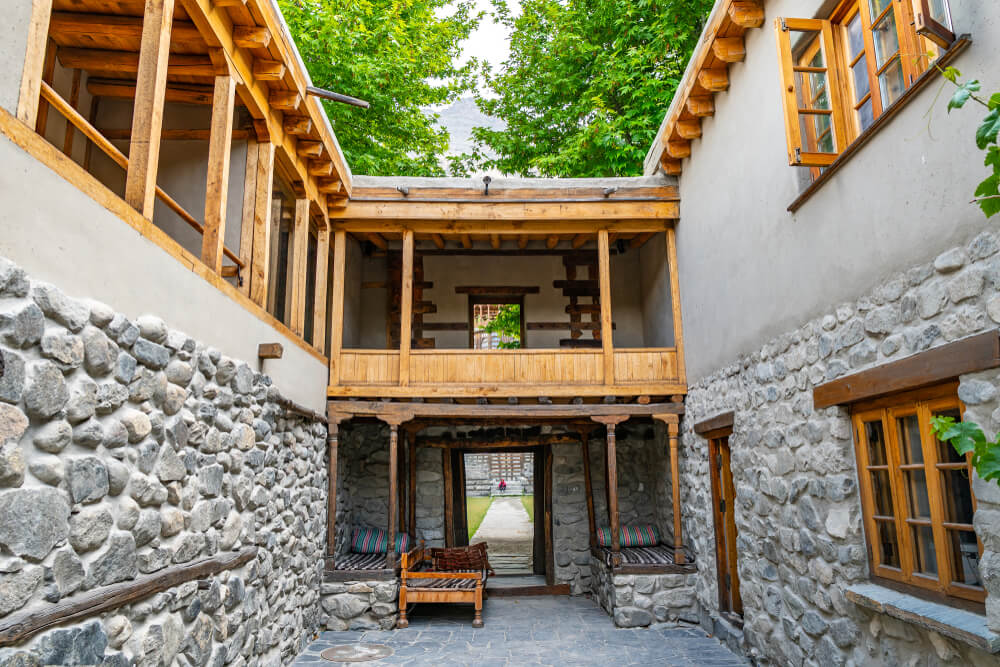
16. Kalam Darchi Fort
Kalam Fort is in the Hunza District of Gilgit Baltistan, Pakistan. The Kalam Fort is on Misgar road. It will take almost one hour to reach the Kalam fort from KKH. The Fort is not operational for the public and tourists as it is under Pak Military control. The renowned Kalam Darchi fort was built by British soldiers in 1932-33 and named after a naked saint. Kalam fort is preserved and maintained by the Pak army as it is under the control of the Pak army. The Kalam Fort is located at the three valley junctions, i.e., Kilik and Mintaka. These three valleys connect this Fort to China and Afghanistan. That is also why it is a hot spot for the Pakistani Army.
17. Bala Hisar Fort
In Persian, Bala Hisar means “high fort.” Fort Bala Hisar is a historical temple of Pakistan situated in Peshawar, Khyber Pakhtunkhwa, Pakistan. In the 7th century, Xuanzang was the first explorer who mentioned it. This old Fort was used as a royal residence by the Durrani Empire when he occupied Peshawar in 1747. In 1758, the Marathas conquered this Fort. In March 1823, Sikhs occupied this Fort. They destroyed and rebuilt it with mud, but soon this Fort was reconstructed with bricks and stones by the British in 1849. In the northwest of the city, Peshawar City, this Fort is located at the height of 90 feet. The area of the Fort inside the outer wall is about 10 acres, while the area outside is approximately 15 acres. The Fort was once outside the city. But because of the city’s growing population and construction activity, it is now a part of it. Due to its high position, the panoramic view of the mountains and entire valley from the Fort is enchanting. It was taken as the headquarters of the frontier forces of Pakistan after the separation of India. But in recent years, in 2018, PM Imran Khan declared it a museum and opened it for tourists. This museum also displays ancient architectural objects, frontier force uniforms, and weapons.
18. Chitral Fort
The Chitral Fort, one of the masterpieces of Mughal architecture, is situated on the western Bank of the River Chitral in Khyber Pakhtunkhwa, Pakistan. Mughals built the Fort in the 15th century. Shah Afzal II renovated it in 1770. In 1911, ruler Shujaul Mulk received the project of the latest building and structure. He also added the Shahi mosque in 1927. In 1947, it became a part of Pakistan. The Fort’s frame is made of mud, bricks, and deodar wood (which becomes rigid and more robust in a dry atmosphere). All the monarchs’ pictures are displayed in the Fort’s great hall, telling us about their respective historical eras. This Fort is now the private property of decedents of Methar’s and not open for the public to visit, but only outside the courtyard. The Chitral fort was the property of the Katoor Dynasty, rulers of Chitral. The Shahi mosque of Chitral Fort resembles the Badshahi mosque of Lahore.
19. Mastuj Fort
The Mastuj fort is located in the city of Mastuj, Khyber Pakhtunkhwa, Pakistan. It is in the open valley of the Mastuj river near Shandur pass, where the Yarhun river joins the Mastuj River. In the 18th century, this Fort was constructed by the Katoor Dynasty in 1780 and rebuilt by a couple in 1830 and 1920. Mastuj Fort is not so famous, but it is an ancient monument of Chitral. Rulers used this Fort as their residence and for military forces’ purposes.
20. Drosh Fort
Drosh Fort is located in Dap Noghore, Chitral, Khyber Pakhtunkhwa, Pakistan. Drosh town is in the lower Chitral. The construction of Drosh Fort was started in the 1920s by Mehtar of Chitral and completed in 1932. In the main structure of the Fort, there were massive high walls made of mud, bricks, and stones. Drosh fort is the only Fort occupied by Umra Khan without any fighting during the siege of Chitral. This Fort is used as a private residence by the Governor of Drosh, Prince Hissam ul Mulk. It is not open for the public and tourists to visit, but it is a marvelous monument.
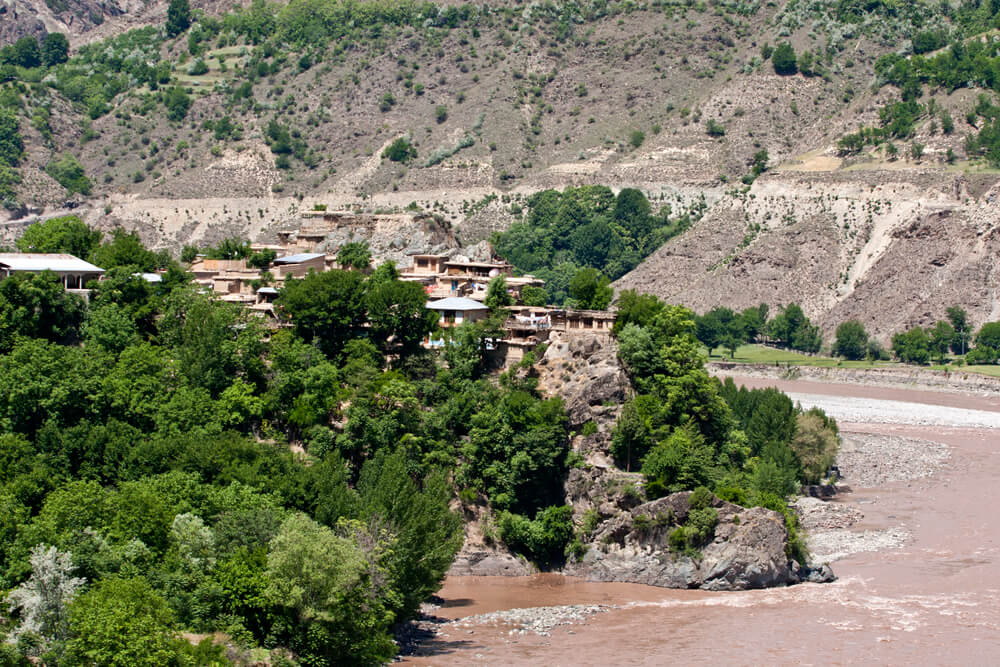
21. Chakdara Fort
The Mughals built the ancient Chakdara fort. This Fort was occupied by the British in 1895. The Fort is used as the academy for the scouts of Chitral. The Chakdara fort lies on high ground on the bank of the River Swat. There is a high wall in the boundaries around the base. This castle of Pakistan is at an elevation of 692 m. The famous Churchill’s Picquet Overlooked this Fort. This Fort has its beauty.
22. Malakand Fort
Three forts were constructed in the Malakand agency by the British. The other two are Dargai forts and Chakdara fort. In 1897, these three forts were staged. Malakand fort was constructed to guard the roads over the Malakand pass. After the emergence of Pakistan on the world map, it comes under the custody of Pakistan. Now it is under the Pakistan army and not open for visitors. However, special permission is required for its visit.
23. Handyside Fort
Handyside Fort is an ancient fort in Kohat, Khyber Pakhtunkhwa, Pakistan. In the British colonial era, this Fort was built by the British Indian Army. The Handyside Fort is on the hilltop. Handyside Fort does not serve as the headquarters of the Pakistan army.
24. Attock Fort
During Akbar’s reign, Attock Khurd constructed the Attock Fort. Project manager Khawaja Shamsuddin Khawafi is in charge of it. Islamabad is 80 km away, or two hours by car, from Attock Fort. It is situated between Peshawar Road and the Indus River. After Pakistan came into existence, this Fort attack was taken by the Army. Then it became the headquarters of the Pakistan Army. The Fort was then under the control of the Special Services Group (SSG), a special operations force of the Pak Army, from 1956 to date. Visitors are not allowed to visit.
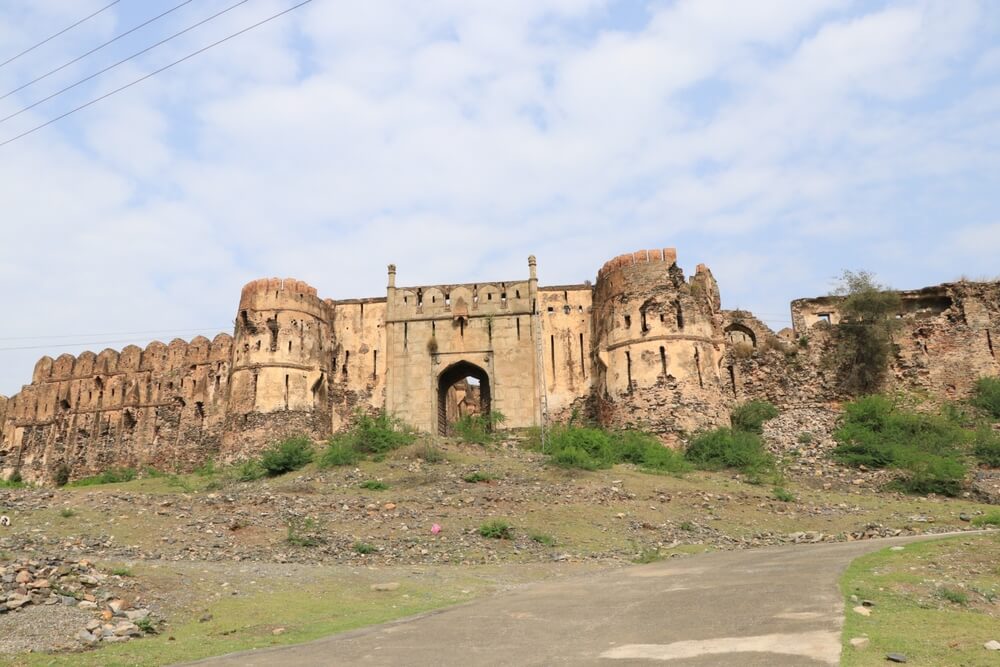
25. Rohtas Fort
Rohtas Fort was built in the 16th century on a hill near the Jhelum city of Punjab, Pakistan. It is more than 300 feet high and 810 meters high from sea level. The Rohtas Fort is spread over an area of more than 70 hectares. Rohtas Fort is one of the largest forts in the subcontinent, and it has 12 gates made of ashlar stone. The Fort is in the Turkish, Asian, and Eastern mixed style. It is still in its original condition and open to the public and tourists.
26. Derawar Fort
The Derawar Fort is located in the heart of Cholistan, in Bahawalpur city, Punjab, Pakistan. It’s a symbol and glory of the Cholistan desert. Rai Jajja Bhatti, a Rajput ruler, built this castle in the 9th century. Its original name was “Dera Rawal.” A big square is enclosed by walls that are 1500 meters thick and 30 meters high. The Shahotra tribe came under the control of Bahawalpur’s Muslim nawab. The Fort is now a part of the UNESCO World Heritage List.
27. Ramkot Fort
The Ramkot Fort is situated near Mirpur, Azad Kashmir, Pakistan, close to the Mangla Dam. Gakhar Toglu constructed Ramkot Fort in the 12th century. The Sikh Maharaja of Kashmir further rebuilt and strengthened Ramkot. Ramkot Fort is on the other side of Mirpur town, and getting there requires taking a boat over Mangla Lake. From Mirpur, a 10-minute drive will take you to Sukhian and the adjoining army water sports club. Here you may rent boats to explore Ramkot Fort. The travel time is 45 minutes. Ramkot Fort, picturesquely perched atop a hill, was constructed on top of an ancient Hindu Shiva temple. The River Jhelum (formerly known as “Vitasta”) encircles this hilltop on three sides. Near one of the temples, artifacts from the 5th and 9th centuries AD have been found during excavations. While securing its borders in the 16th and 17th centuries AD, Kashmir’s Muslim rulers constructed many forts. One of them is Ramkot, perched atop the meeting point of the rivers Jhelum and Poonch.
28. Malot Fort
One of the ancient forts in Malot is Jehlum, Pakistan’s village. It was built in the 10th century. The structure is a mixture of Greek and Kashmiri architecture. The shine of red stone that shines in sunlight is beautiful. It is open to the public and tourists.
29. Darbar Mahal
Darbar Mahal Fort is located in the Bahawalpur city of Pakistan. In 1905, its construction was completed by Bahawal Khan and named Mubarak Mahal. Formally, it was the residence of the Nawab of Bahawalpur. Then armed forces and military forces took this place on lease and used it for courtly events in Bahawalpur. It is an ancient building combining Arabic, European and local architectural flavors. There is a large entrance on each side of the building. Darbar Mahal Fort is not open to visitors.
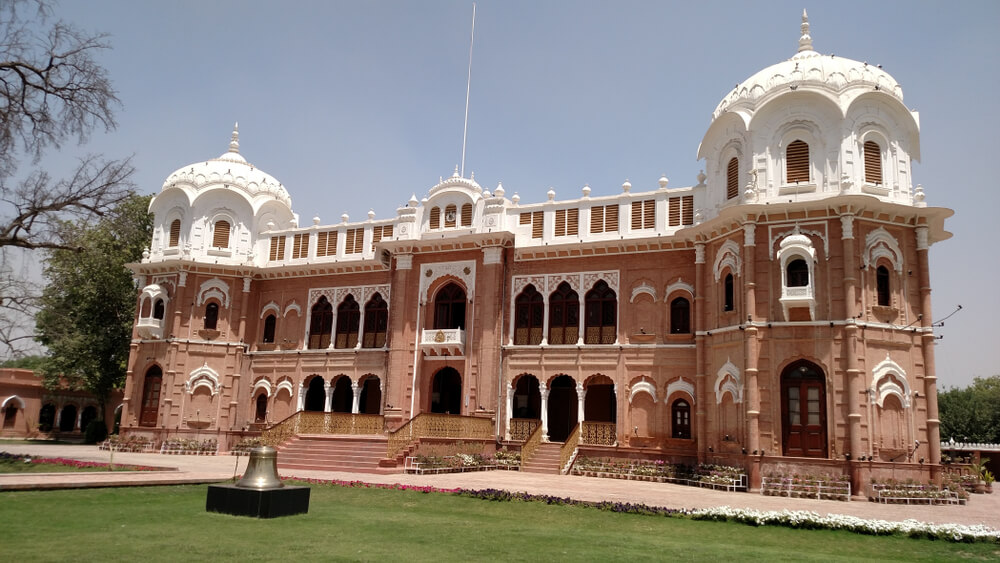
30. Pharwala Fort
Pharwala fort is situated 40 km off from Islamabad in Punjab, Pakistan. There is a wide range of Himalia on one side and the Swaan River on the other side of this 11th-century Fort. Hindu shahis were built in this Fort initially, and then, in 1519, Mughal Emperor Babur occupied the Fort. The British conquered this Fort in 1857, and then in 1947, the Fort came under the custody of Pakistan. An old Banyan tree is present inside the Fort. A difficult road leads to it via a village. However, it is open to the public and foreign visitors.
31. Sheikhupura Fort
Sheikhupura Fort is near Sheikhupura city in Punjab, Pakistan. It is also near Lahore city. The Mughal Emperor Jahangir built this Fort in the 17th century. The 400-year-old Sheikhupura Fort is a living sign of the glory of the Mughal period. Sikhs occupied this Fort during their reign over the Punjab province. The Fort was under the use of the military during the Sikh and British periods. After 1947, when Pakistan was established, Govt. converted this Fort into a refugee camp. Due to its distorted condition, it is not open to the public, and the government is working on its restoration project.
32. Baghsar Fort
Baghsar Fort is one of the ancient monuments in Samahni Valley is Bhimber, Pakistan. Mughal rulers constructed this Fort. According to an English traveler, Godfry Vigne, this Fort was erected by Dhian Singh. The Fort has three entrance gates. The outer wall is the boundary, and there are about 38 rooms on the outer perimeter of the Fort. At the same time, there is a darbar, a pond, and 43 rooms on the inner side of the Fort. The Fort is beside the LOC of Pakistan and India. That’s why it is not open to the public and tourists.
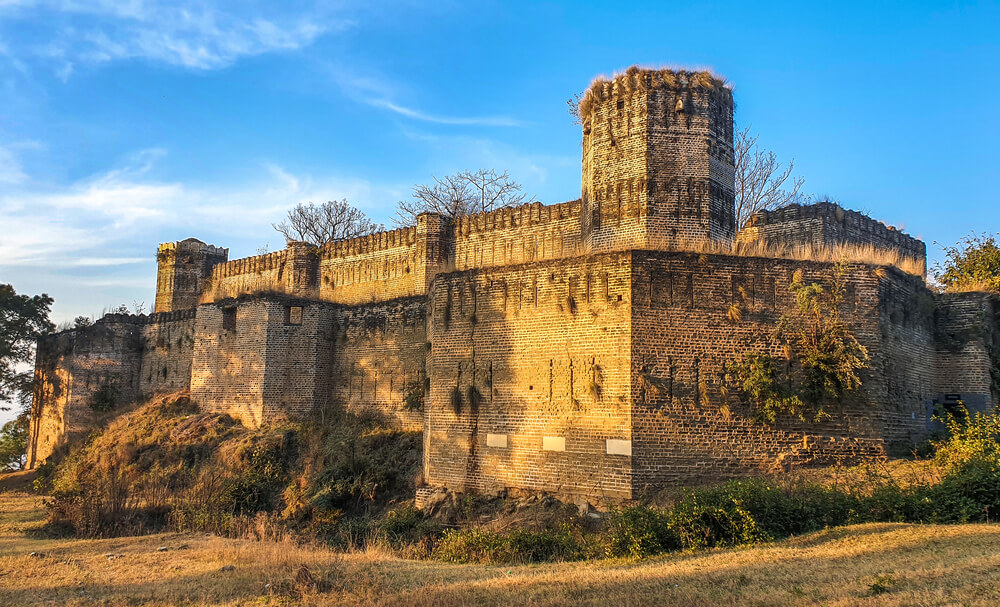
33. Mankera Fort
Mankera Fort is a highlighted feature of the Mankere, 0.5 kilometers from the Bhakkar highway. During the Baloch rule, the Fort was constructed with bricks, and then, in the era of Pathan rulers, it was built with special mud from the river Indus that was transformed into glue-type material. In the middle of the Fort is the tomb of Prince Humayun, who was considered a saint. The primary structure of the Fort is ruined, but the wall of special mud is still present. The glory of one thousand years ago is destroyed due to negligence.
34. Meer Garh Fort
It is one of the top tourist points of Meer Ghar in Bahawalnagar, Punjab, Pakistan. It is 9 km from Fort Abbas and located in the center of desert Cholistan, Pakistan. Noor Muhammad khan built this Fort. The Fort’s walls are round in corners and about 28 feet high. The Fort has four minarets. There is an entrance gate to the Fort. There was also a tiny house and two sweet water wells, but with time they all disintegrated, and the wells dried up. It is one of the historical forts, but because it is backward, it is neglected by higher authorities. Although its condition is pathetic, it is open to visitors.
35. Marot Fort
Marot fort is located in the Cholistan, between the Yazman and Fort Abbas, Bahawalnagar, Punjab, Pakistan. It creates a link between Dehli and Multan. The Forts of Cholistan have their glory, and the Marot fort is one of them. It is a symbol of the glory of ancient rulers. The Marot fort is on the bank of the River Gjaggra. The ruler of Chitto founded this Fort at the time when the Sarasvati River was alive. Its name is the Name of Hindu God by Aryans. Open for the public to visit.
36. Fort Abbas
Fort Abbas was formerly known as Pholra. It is situated in Bahawalnagar, Punjab, Pakistan, the capital of the Cholistan Desert. Fort Abbas stands on the border between Pakistan and India, south of Haroonabad and close to Faqirwala. On the east side of the Fort, there is a River. It is a testament to the exquisite setting of the Bahawalnagar Nawabs.
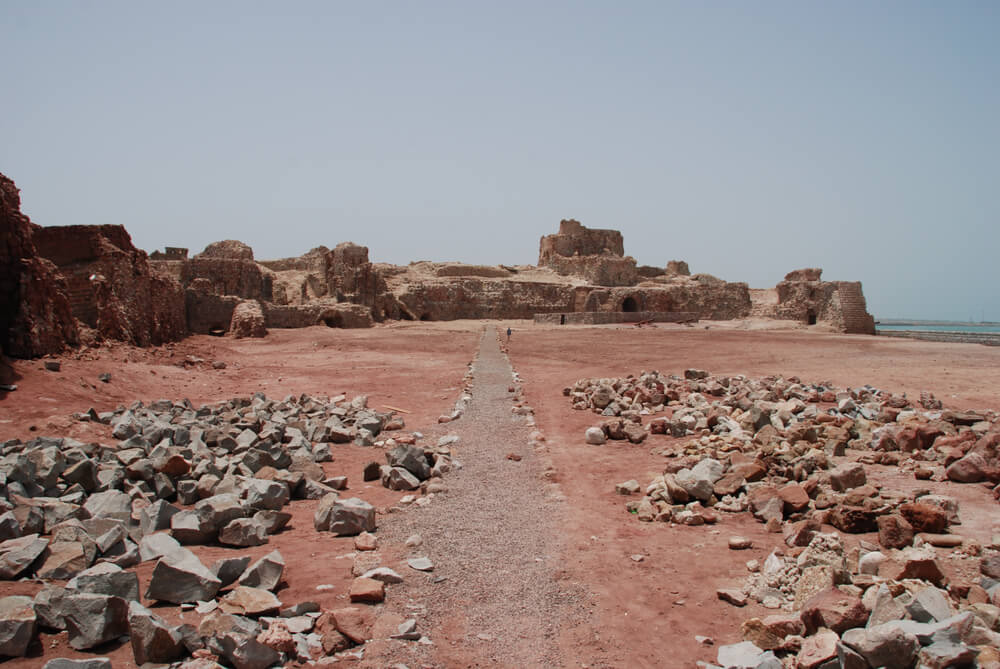
37. Bavaani Fort
Bavaani fort is located in the city of Sahiwal, Punjab, Pakistan. It is an ancient monument back from the 14th century. This Fort is a historical place and has great historical significance. Its 20 percent structure is present yet. It has a remarkable memory of the past Mughals and the British. The bavaani Fort Sahiwal is open to visitors and foreigners.
38. Shujabad Fort
Shujabad Fort has situated 45 km from Multan. In 1750, Nawab Shuja khan built this Fort under the reign of Ahmad Shah Abdali. In 1766, construction of the Fort started and was completed in 1772. It is one of the largest forts. There are four gates named Pashawari, Kandarai, Bahawalpuri, and Multani gates, but now they are named khalifa e Rashadins. After 1947, people occupied this place and lived there. Gradually, markets build up, and it looks like a city. It is in pathetic condition, and no one is concerned about it.
39. Nandana Fort:
Nandana Fort is situated in Bagwanwala Village in Jhelum, more than 300km from a salt range. A Hindu king, Inder Pal, built this Fort at 15,000 feet. The Shahi Kings ruled over this Fort until the 11th century, the Mahmud of Ghazni conquered this area. Nandana fort has a rich history. It served as a study place for Muslim scientists. It is also called Al Biruni center because it is where Abu Rayjan Al Biruni measured the earth’s circumference. Later it became a safer and more pleasant spot for the Mughal Emperors. Century old, Nandana Fort is, although in pathetic condition, still a sign of the magnificent glory of the past. The government is looking forward to its restoration.
40. Satghara Fort
In the Udu language, Sat means seven, and Ghara means home. The Satghara fort is built around the tomb of Mir Chakar Khan Rind (a Bloch chief), who died in 1565 in Satghara Town near Okara City. The Fort’s shape is square, and the length is 130 meters on each side. People from the inside out occupy this glorious ancient monument out.
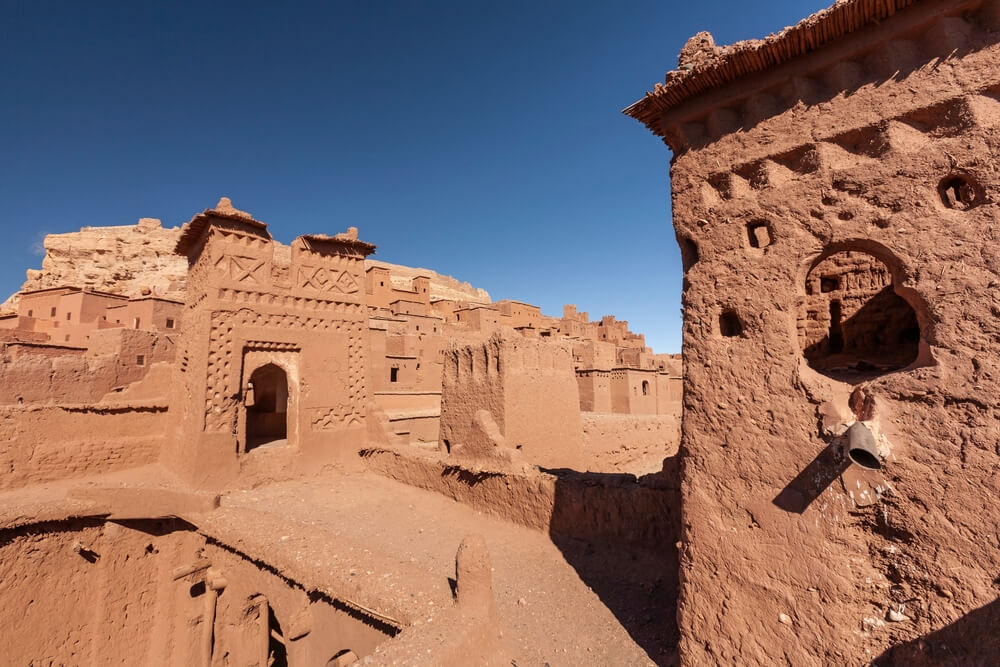
41. Kot Diji Fort
Talpurs built this fort hundreds of years ago. It is located in the Khairpur district of Sindh, Pakistan. Kot Diji was built by Mir Sohrab Talpur, ruler of the Talpur dynasty, in 1785. The Kot Diji Fort is on a hill at 110 feet. The mountain is made of limestone, and the building is made of kiln-baked bricks. There are three towers, each 50 feet tall. From the top of the Fort, the view of the surroundings is magnificent. It remains open from 8 am to 6 pm to the public.
42. Ranikot Fort:
This ancient Fort is near Sann, district Jamshoro, Sindh, Pakistan. Ranikot Fort is situated in the 2nd largest park in Pakistan, The Kirthar National Park. It is also known as the “Wall of Sindh.” In the 17th century, during the Talpur dynasty, this Fort came into existence. Before the British, it was the capital of the Amirs of Sindh. That was the glory of the wealth of the Talpurs. In 1993, UNESCO nominated it as a heritage site. The Fort is enormous, stretching 31 kilometers (19 mi) along contours to connect numerous desolate mountains of the Kirthar hills. Three of the many bastions scattered around the Fort’s wall have a semi-circular shape. The Fort’s perimeter is naturally steep and mountainous in the north, with fort walls enclosing the other three sides. A smaller fort within the main Fort called the “Miri Fort” is located approximately three kilometers from the Sann gate and is said to have functioned as the Palace of the Mir royal dynasty.
When the Talpur dynasty ruled Sindh, Nawab Wali Muhammed Leghari, who served as the country’s prime minister, began the Fort’s initial restoration. On the Fort, restoration work was done, especially on the Sann Gate complex, the fortification walls that extended south and included the mosque, and the tiny Meeri Fort or Palace inside the main Fort. The Dadu District government, the Sindh Department of Culture, and the Pakistani Archaeology Department participated in these. A 2005 investigation was launched in response to claims of subpar building and favoritism in contract selection. Based on this report, the government suspended further restoration. It remains open for local and foreign visitors from 8 am to 7 pm.
43. Naukot Fort
In 1814, Naukot Fort was built by Mir Karam Ali Khan Talpur. It is located at the Edge of the Thar Desert, in Mithi, district Tarparkar, Sindh, Pakistan. Also known as “The Gateway to the Thar Desert.” The Fort attracts the eyes. It is made of burnt bricks and mortar mud. It is about 113 m in length but has only one narrow entrance. A wall of 4 m wide surrounded the Fort. It attracts tourists, especially after rain, when the view of the desert from the top of the Fort is panoramic. The Talpur Mirs utilized the Fort as a stronghold and home. Some of the structures inside the Fort are in a collapsed state. These structures were most likely used as homes, some as prisons for convicts. The building is presently being restored since its drainage system can be obstructed, causing water to pile up in the area. It remains open from 8 am to 6 pm daily.
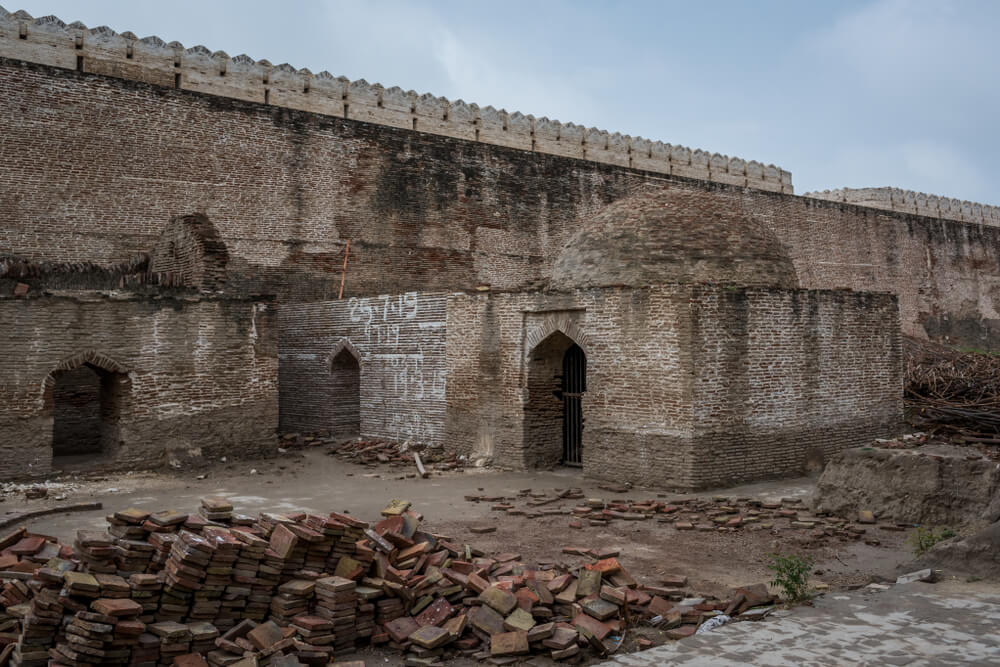
44. Bakhar Fort
Bakhar fort is also called the island of Bakhar, located on the Indus, between the Sukkur and Rohri Districts. In the 7th century, Sayyid Muhammad Al-Makki named this limestone island Bakhar. This Fort has 200 years of history between the Mughals and the British era. But now it is under the custody of the army public school Bakhar. There is a tomb of Sayyid Sadruddin (son of Sayyid Muhammad Al-Makki) inside the fort.
45. Sehwan Fort
Sehwan Fort is a 2,000-year-old fort located in Sehwan City, Dadu, Sindh, Pakistan. It is said that Alexander built it, but archeologists claim its bricks are from the old Hindu style, which proves that Hindus built this Fort. This Fort is known as Kafir Qila, the old Fort, the New Sehwan fort, etc. The Fort was constructed twice by Muslims and is now 60 feet high. It is ruined, but walls are present that show the signs of a fort.
46. Qasim fort / Manora Fort
In the 18th century, the Talpur dynasty built Qasim Fort. It was a hotspot for trade from Karachi to Oman and Bahrain. It is one of the most beautiful places in Karachi, increasing its beauty and enhancing its reputation. In 1839, the British conquered this Fort because of its geographical importance. The Fort features a massive Bin Qasim tower and cannon exhibitions from the 1980s. It is a must-watch place in Karachi.
47. Pacco Qillo
Its previous name was Pakka Qila. That means, in the Urdu language, a strong Fort. It is located in the city of Hyderabad, Sindh, Pakistan. In 1768, the Fort was built by Mian Ghulam Shah Kalhoro when he founded Hyderabad City. During the Talpur dynasty, this Fort remained the residence of Mir Fateh Ali Khan. In 1843, the British conquered the Fort. The Fort was almost destroyed due to blasts during the war. The British destroyed the remaining buildings in 1857 to make accommodations for the military. Pacco Qillo, the glory of Sindh, remains open today for visitors, but it is in dire need of rebuilding/repair/ reconstruction.
48. Umerkot Fort
Umarkot Fort is in the Umerkot district of Sindh, Pakistan. In the 11th century, the Fort was built by Rana Amar Singh. Before 1947, independent of Pakistan. It remained under the custody of the Ranas of Ummerkot, Hindu Rajput. In Umerkot fort, Emperor Akbar (son of Mughal Emperor Humayun) was born on 15 October 1542, and became the Shahenshah. In 1746, Noor Mohammad Kalhoro, the Mughal subahdar, rebuilt the Fort on the present site. Later, this Fort was captured by the British. A 17-foot-thick and 45-foot-high wall surround the building. It is rectangular with four semi-circular-shaped bastions. It is open for visitors from 9 am to 6 pm.
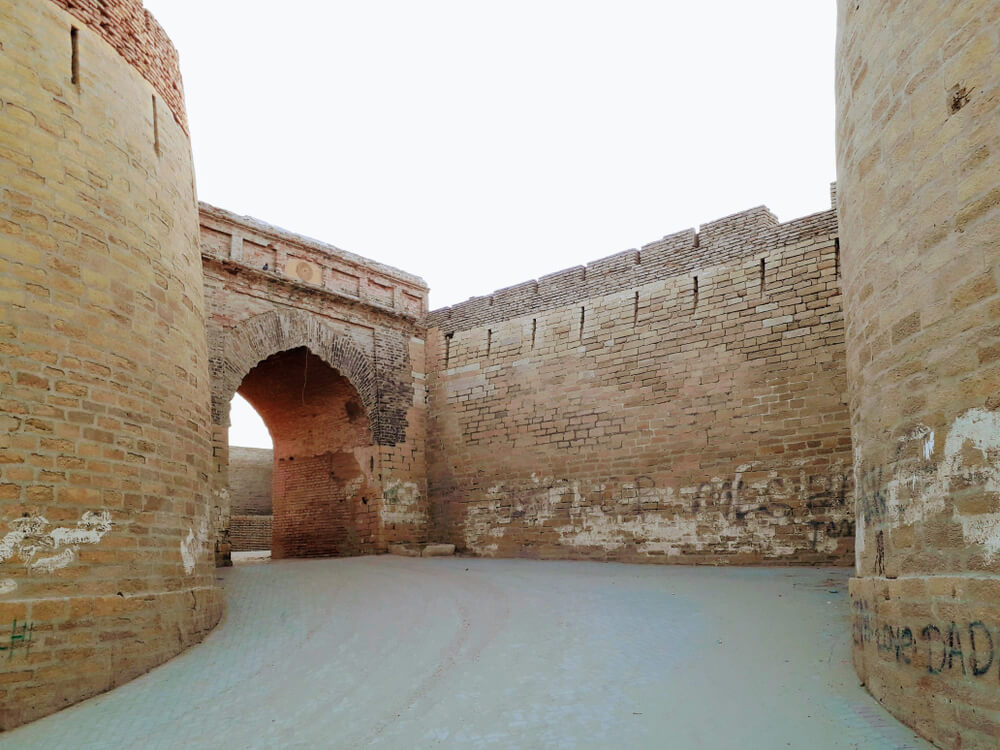
49. Rawat Fort
Rawat Fort is a monument from the 16th century located on the Potohar plateau of Rawalpindi, Pakistan. The Gakhar tribe constructed it. It has two quadrangular gates. The ruined graves of Ghakkar chief Sultan Sarang and his two sons are in the center of the courtyard. The original Fort was reshaped and renovated many times. It is a historical point to visit and see the fantastic landscape of the mosque.
50. Jamrud Fort
Jamrud Fort is located in Jamrud town, Khyber Agency, Peshawar, Khyber Pakhtunkhwa, Pakistan. In 1836, it was built by Sikh Hari Singh Nalwa (general of Ranjit Singh). The Fort is on a high mound and has 3 meters thick and 12-meter high wall. Cannons are installed on the wall to monitor the opponent’s attack. Sikhs are always welcome to visit this historical place, which is closed in a renovated state and preserved by the state.
51. Miranshah Fort
In Pakistan’s North Waziristan, the town of Miran Shah is well-known, where the British built Miranshah Fort, a historic structure, in 1905. The British built this Fort to control North Waziristan. After Pakistan came into existence, this Fort was used by PAF and “Tochi Scouts. “After that, the “Taliban” took control of North Waziristan. The Pakistan army freed up this area from the Taliban in recent years. Although this Fort is ruined, it is still the sign of an ancient marvel.
52. Wana Fort
Wana Fort is situated more than 80km south of Waziristan, Pakistan. In 1823, the Wana fort was built by a Sikh at the entrance of Khyber Pass to look after it. The Fort’s structure is box-like, with a watch at the top. The remaining are left behind, and the vacated leftover Fort is converted into the police station in the district.
53. Ali Masjid Fort
Ali Masjid Fort is situated in a high location in Khyber Pass, Pakistan. The 700-year-old Fort was built in 1832 by Dost Muhammad Khan. But it always remains a military spot. According to natives, the great Caliph Ali RA visited this site. A commemorative shrine of Caliph Ali RA is also here. In 1839, the British occupied this Fort. Now it is in Pakistani custody—the glory of Muslims’ past.
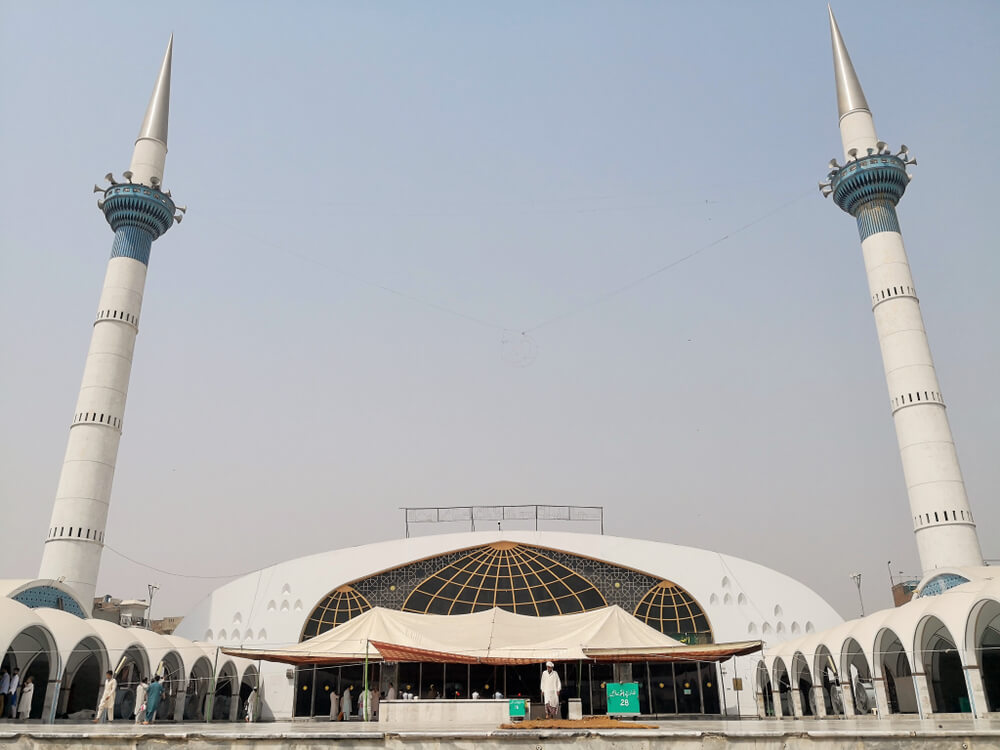
54. Islam Garh Fort
Islam Garh Fort ishas located 100km from Rahim yar khan. It is in the heart of Desert Cholistan. In 1665, Raja Rawal Siri Bheem Singh built this Fort and completed it in 20 years. Initially, it was named Bheem fort. The Fort was constructed with distinctive Indian stones, local mud, and bricks. In 1780, Ikhtiar Kahan, a Muslim king, gave this Fort the name “Islam Garh Fort.”
Additionally, he constructed a mosque in front of the Fort. Now it is in Pakistani custody. The Fort is running, and no one bothers about it.
55. Bijnot Fort
Bijnot is a ruined fortress of Bahawalpur, Punjab, Pakistan. It is located in the Cholistan desert of Pakistan. Khair Panwar Rajputs built Bijnot Fort. It was destroyed in the Pakistan-India War in 1971. The Fort’s structure is ruined, while most of the original building is still present. Its shape is square and about 300 feet. The entrance is on the north side. It is a majestic ancient fort. Open to visitors.
56. Din Garh Fort
Din Garh Fort is another ruined Fort in the Cholistan desert, Pakistan. It is one of the historical forts that is only left behind. The archaeology department of Pakistan is looking forward to restoring the crumbling historical places of Pakistan.
57. Khair Garh Fort
The 22-year-old Khairgarh is located in the Cholistan desert, Pakistan. The Fort is fading into the sand because it is far away from the populated area. According to history, this Fort was built by Haji Khan Mandhani Daud for defense purposes in 1776. The Fort is made of old and new bricks, showing that it is historic. The main entrance gate is still in good condition. The Fort is majestic and constructed beautifully but not looked well after. As the Fort is ruined, the superstition persists that it is under the influence of strongholds.
58. Nawan Kot Fort
Fort Nawan kot is located in Bahawalpur District Cholistan, Punjab, Pakistan. This fortress is spread over an area of 156 square meters inwards and is made of mud, bricks, and rocks. The entrance gate is 10 feet wide on the north side, and the guard rooms are on both sides. In the center, on the western side of the inner wall, the remains of 5 rooms are present. It is 55 km away from Derawar fort. Some of its original features still exist. Due to the negligence of the Government and local authorities, this monument is not in its original condition. If the government plans to conserve this heritage, it will become one of the great spots to visit.
59. Mauj Garh Fort
In Bahawalnagar’s Thandi Khoi stands the Moj Garh Fort. In 1743 AD, Maroof Khan Kehrani built this magnificent Fort. Although the Fort has witnessed several battles, its building is still standing with its glory. It is one of the stronghold forts of Bahawalpur. The structure of the Fort is made of bricks and mud. It is decorated with tiles—a magnificent architectural monument of the Mughal Emperor. If the government restores this Fort, it will become a great spot.
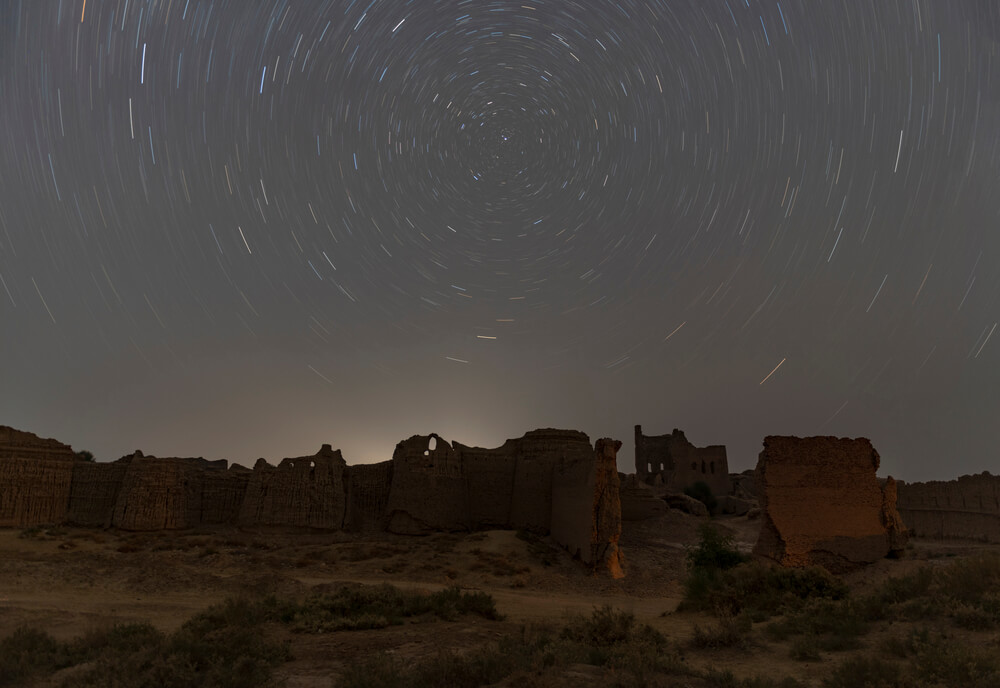
60. Throtchi Fort
Azad Kashmir’s Throtchi Fort is located in Gulpur, district Kotli. A Mughal constructed this Fort in the year 1460. It is now Pakistan’s property. This Fort is ruined, but if the government shows some concern, it will become a great tourist spot. The panoramic view of the valley from the Fort is enchanting.
61. Noor Mahal:
Noor Mahal Fort, also known as the Palace of Lights, is located in Bahawalpur, Pakistan. In1872, shah Jahan of Bahawalnagar laid the foundation of Noor Mahal Fort. He had a keen interest in architecture. That’s why the Noor Mahal Fort is a glorious architectural heritage. He built this Fort in honor of his wife at 1.2 million then and completed it in 1875. The material used in construction is imported from Italy and England. It is one of the most significant monuments. The Pakistan army purchased it in 1997. Now it is the property of the Pakistan army and is used as a guest house.
62. Sadiq Garh Palace
The most famous heritage of Pakistan is Sadiq Ghar. It is one of the most significant buildings and is spread over an area of 125 acres. One hundred seventy-five years ago, the Nawab of Bahawalpur built this Palace at the cost of about 1.5 million. It is a three-story structure. The structure houses a grand hall and 120 guest rooms representing various civilizations. Inside the Palace lies a stunning mosque built in an Islamic design. The antique-style cars that Nawabs used are also on display. During the late Zulfikar Ali Bhutto, the Palace was sealed due to personal affairs. After that, the decoration of the Palace starts, and no one looks after it. Although it is open to tourists, there is no proper road to the Palace.
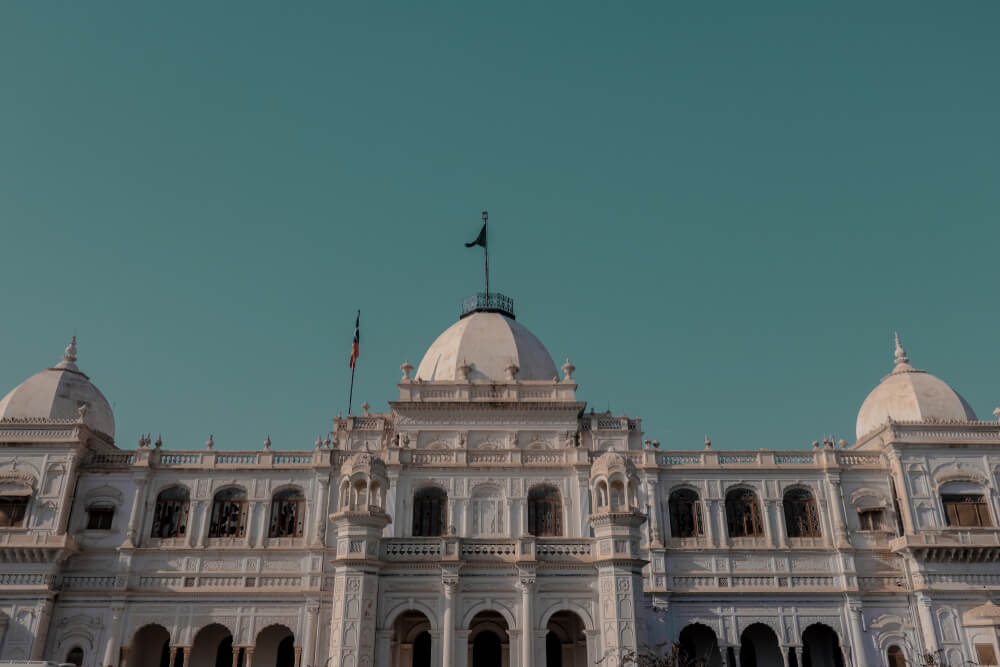
63. Faiz Mahal
Faiz Mahal is located in Khairpur, Sindh, Pakistan. In 1798, this Mahal was built by Mir Sohrab Khan. In the main building is a sovereign Court of the Talpur dynasty of Khairpur. There is a Darbar, a dining hall and 16 waiting rooms, and royal guest rooms. Moreover, a Hathi Khana was also made for royal elephants and horses. This Palace is a masterpiece and a marvel creature of Nawabs.
64. Shagai Fort
Shagai Fort is situated at the entrance to the Khyber Pass beside Bab-e- Khyber, a tribal district of Khyber KPK, Pakistan. In 1927, the British built this Fort to oversee the Khyber Pass. It is 847 meters elevated from sea level. It is now serving as a headquarters for the Khyber Rifles. It is under Pakistan Army control.
65. Michni Fort
Michni Fort is situated beyond Ali Masjid, Khyber Pass, KPK, Pakistan. It was 3600 feet high when the British completed it in 1920. It is the final destination for travelers heading to Afghanistan. The border between Pakistan and Afghanistan is visible from all sides. This place has served as the scene for numerous historical stories. The Fort is open to visitors now that the Army is in charge. Tourist guides provide green tea while also describing the history of this Fort.
66. Thall fort
Thal Fort is situated in Thal, Hangu, KPK, Pakistan. In 1909, the Thall fort was built by the British Raj. It protects the Pakistan and Afghanistan border junction and the Kurran river that crosses it. This historical Fort serves as the headquarters of Scouts of Thall and FC.
67. Harkishan Garh Fort
A 200-year-old Harkishan Garh Fort is now converted into a museum by the CM of KPK orders. In 1821, Hari Singh Nalwa, General of Haripur, built this Fort. The area of this Fort is around 70 Kanals and 16m high, and there are 4 m thick walls around the Fort. It is one of the historical tourist points that historians have witnessed.
68. Kusak Fort
Kusak fort is in Choa saiden, chakwal, Pakistan. It is 160km from Islamabad, 48km from South Chakwal, and 25 km away from Kallar Kahar. In the 11th century, the Fort was built by Raja Jodh (son of Raja Mall Khan Janjua, the legendary Janjua Sultan). This Fort is at the peak of a mountain and covers an area of 13 acres. The building of the Fort is made of local stones, soil, and mud. In the Fort are two ponds, two large guest houses, 70 houses for the Army, and temples for Hindu soldiers. Around the Fort, there is a 370-foot-high wall. A great historical site to visit.
69. Sangni Fort
Sangni Fort is likely to be constructed in the Mughal period, located in the village of Takal, tehsil Kalar Syedan, district of Rawalpindi, Punjab, Pakistan. The Sikh era strengthened it, and when the British took control in 1849, they used it as a jail. The Sangni Fort is on a steep sloping hillock. It consists of 4 corner towers with high curtain walls. The main entrance’s ancient gates have been destroyed and are replaced with steel gates. This Fort has a Sahibzada Abdul Hakeem (a Sufi) shrine.
70. Mangla Fort
Mangla Fort is the oldest Fort before Christ in the Rajouri district, now located near the embankment of Mangla Dam Jhelum. It is named after the Mangla Devi. In the Shivalik mountain range, the Fort is on a small mountain. It has a big hall and rooms inside the Fort used for residential purposes. There is also a pond and temples inside the Fort. During the Mangla Dam construction, some parts of the regiment were consumed, but the central Fort was still present and well maintained by the administration of Mangla Dam.
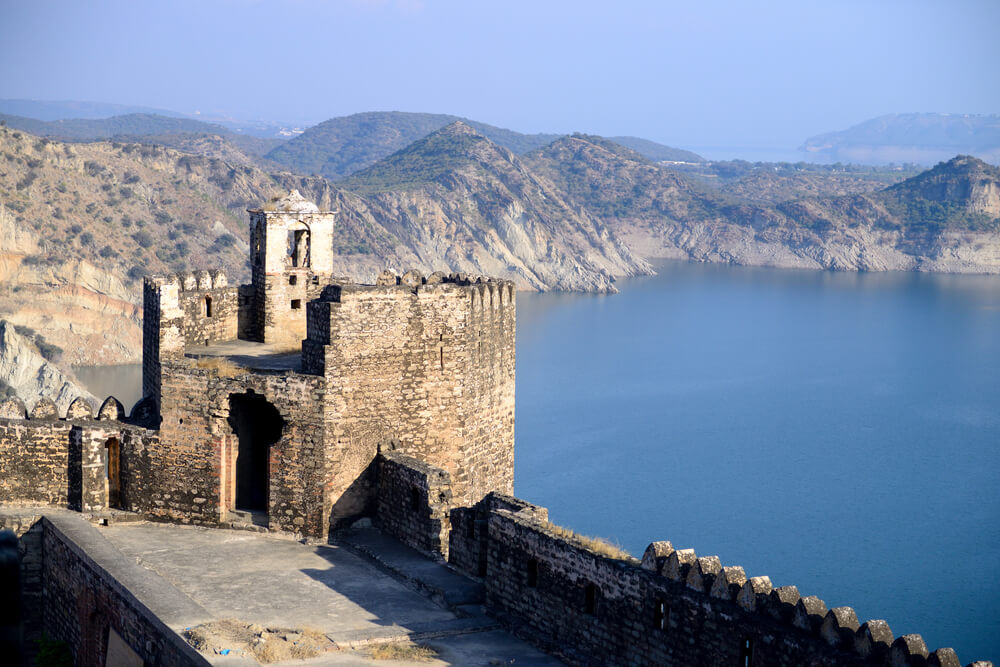
71. Fort Akal Garh
Nau Nihal Singh built Akalgarh Fort in 1836. Fort Akal Ghar is located on the North West side of Dera Ismail Khan, KPK, Pakistan. Initially, it was made of mud, but the British improved this building and used it for the town’s garrison. Later it was used by the British to garrison the city. There is a shrine of a saint next to the main entrance.
72. Miri Fort
Miri Fort is situated in Turbat Kech, on the road in Balochistan, Pakistan. This 5000BC old Fort is at the height of 1684m. According to local folk, it is the 2nd oldest Fort, having four floors. The ruler reserved two hundred rooms on the ground floor for the Army, and the 4th floor was the king’s residence. The Hoth tribe, Kulanchi tribe, Gichki tribe, and many kings ruled over the Miri Kalat. Miri Kalat is also famous for the Saasi and Pannu tales. Miri Fort is under the government of Pakistan.
73. Jam Garh Fort
The historic Jam Garh fort is located in Cholistan, Pakistan. It is 114 km east of Bahawalpur and 9 km from Fort Mir Garh. In 1788, Jam Khan Marofani built this square-shaped Fort 114 feet high from all sides. The Fort has a 9-foot-high dome-shaped gate with a wide entrance and four minarets. There is a round bridge that crosses all four corners of the Fort. After the death of Jan Khan Marofani, the Fort slowly begins to collapse, and no one is there to look after it. One of the ancient forts of Cholistan was scrambled due to the negligence of the authorities.
74. Akrand Fort
The 6000-year-old Akrand Fort is located in Soon Valley district, Khushab, Punjab, Pakistan. Raja Tataar Khan built this Fort to secure the Soon and Pakhar areas. The Fort is surrounded by dense forest, and only one way leads to the Fort. Inside the Fort are residential houses, weapons stores, and horses’ stables, but all are ruined. The Fort was a historical and architectural marvel, but now it is a ruined picture of old times.
75. Tiwana Fort
Tiwana Fort is an abandoned locality of Mitha Tiwana Road, KPK, Pakistan. Tiwana Fort is located in the north of Lakki. One of the ancient forts before the Mughals and reconstructed in the British era. But now, due to concern authorities’ negligence, it is among the ruined ancient monuments.
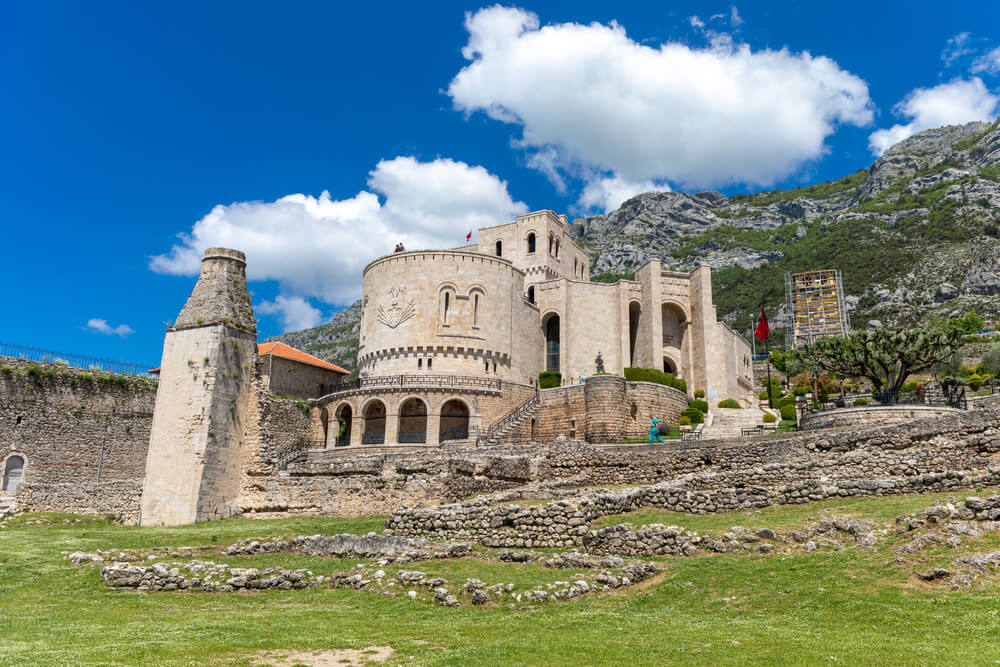
FAQs
1. How many forts are there in Pakistan?
Pakistan has over 100 historical forts, but many forts have been ruined with time. Many of these forts were built by the British Raj. Some are in excellent condition, and others are in dire need of restoration. In this post, we tried to cover the most notable forts in Pakistan.
2. Which is the oldest Fort in Pakistan?
Multan fort is the oldest Fort in Pakistan, erected almost 2600 years ago. It was constructed and ruined many times and is situated in one of the oldest subcontinent cities. It buried the remains of many civilizations under its ruins.
3. Which is the largest Fort in Punjab?
Rohtas fort is one of the most magnificent forts in Punjab. It is also the largest Fort in Punjab. Sher Shah Suri built the Fort in 1541 A.D. Rohtas fort is located on the banks of the Jhelum River, about 60 km from Islamabad. The defense is spread over 70 hectares and is declared a UNESCO World Heritage Site. Rohtas fort has withstood many sieges over the years and is today considered one of Pakistan’s most invincible forts.
4. Which is the national Fort of Pakistan?
Ranikot fort is the national Fort of Pakistan. It is referred to as “The Great Wall of Sindh” and is one of the most prominent forts in the entire globe. It is situated in the Sindh province. The Fort dates back to the 17th century and has been used for various purposes. Today, it is open to tourists, and visitors can explore its many fascinating features.
Conclusion
Many famous forts in Pakistan have a long and illustrious history ranging from small fortresses to vast walled cities dating back hundreds of years. Many are in scenic locations, such as overlooking mountains or on clifftops. Others are located in bustling cities, providing a unique perspective on Pakistan’s urban landscapes. These historical forts in Pakistan testify to the many empires that have sway over Pakistan’s lands. This List of 75 historical forts in Pakistan provides a glimpse into the country’s past, each with its unique history and story. If you’re interested in Pakistan’s history, then be sure to visit some of these forts!
Individual Posts
-
Altit Fort
-
Kharphocho Fort
-
Multan Fort
-
Sangni Fort
-
Miri Fort – The Quintessential Historical Monument of Quetta
-
LAHORE FORT
-
Baghsar Fort
-
Ramkot Fort
-
Shigar Fort
-
Khaplu Palace
-
Faiz Mahal
-
Baltit Fort
-
Rohtas Fort
-
Rawat Fort
-
Ranikot Fort Jamshoro, Pakistan
-
Noor Mahal
-
Sadiq Garh Palace
-
Derawar Fort
-
RED FORT
-
Attock Fort

